- Slideshow
- Mosaic
- Text
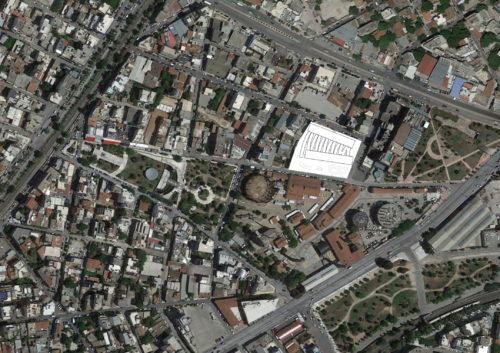
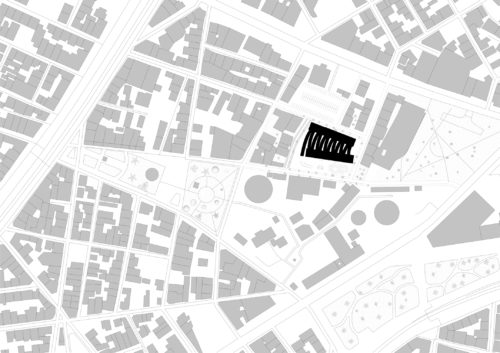
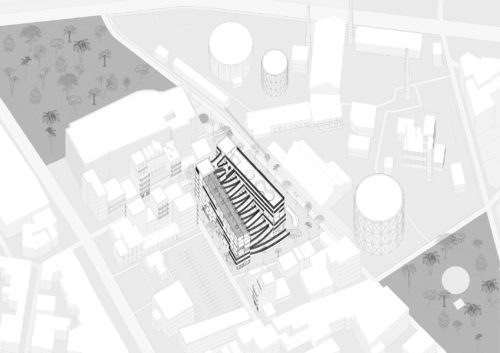
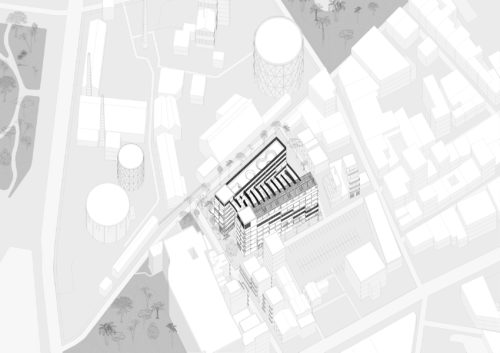
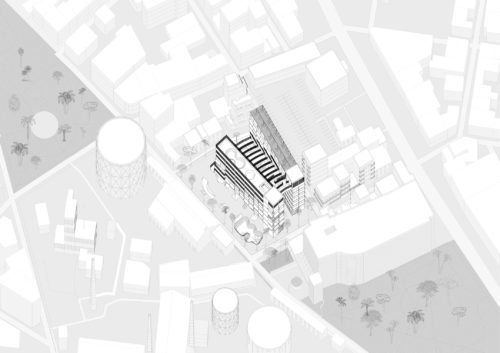
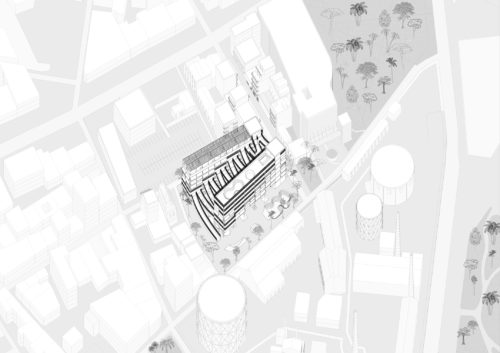
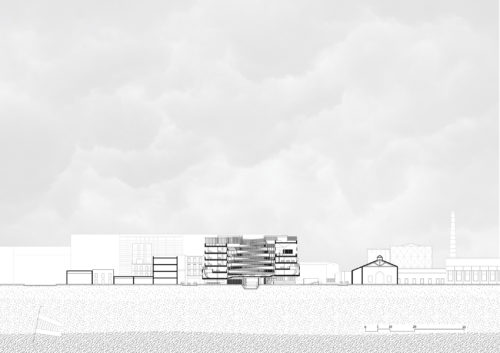
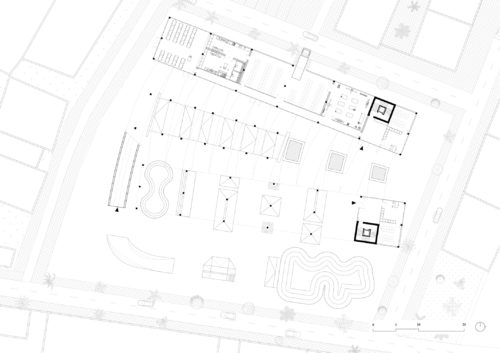
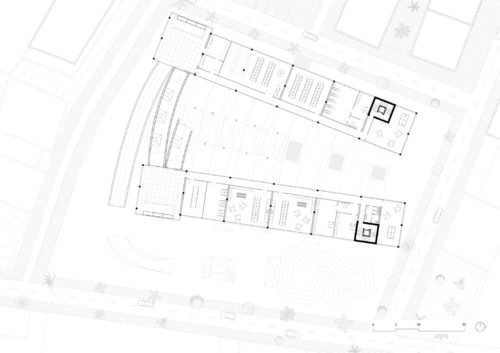
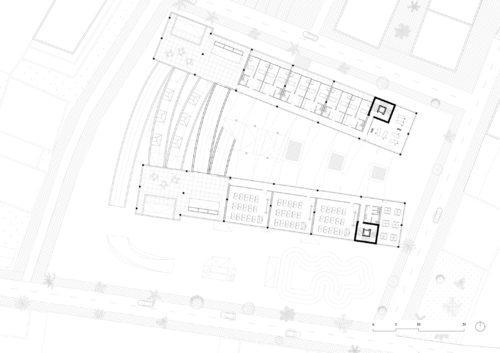
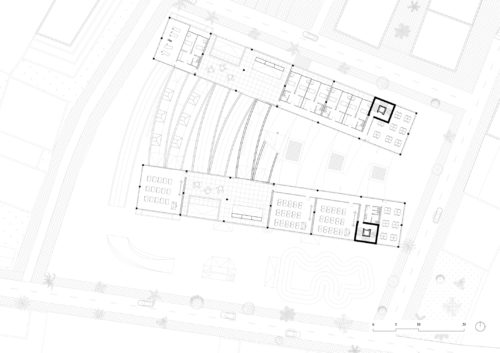
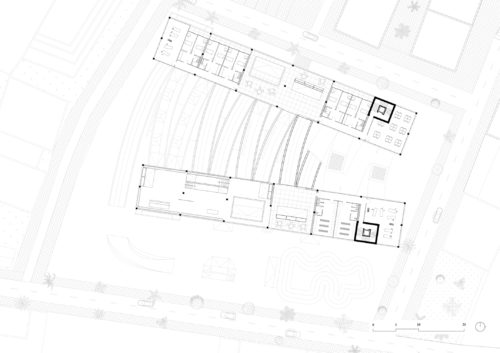


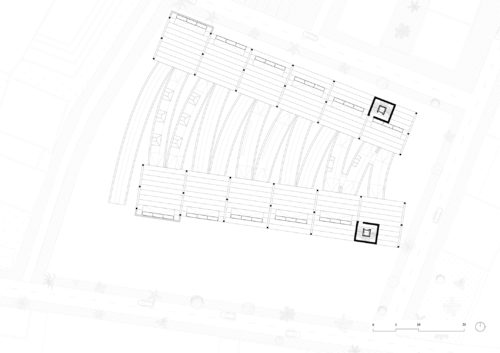
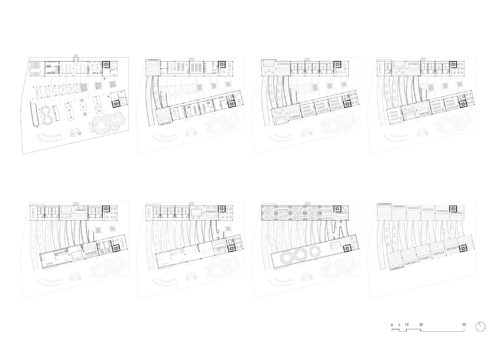

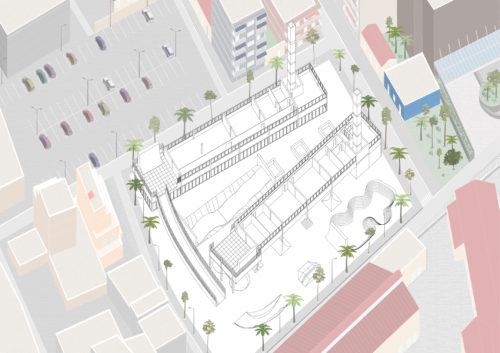
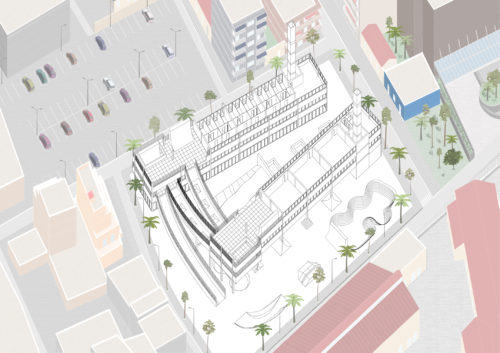
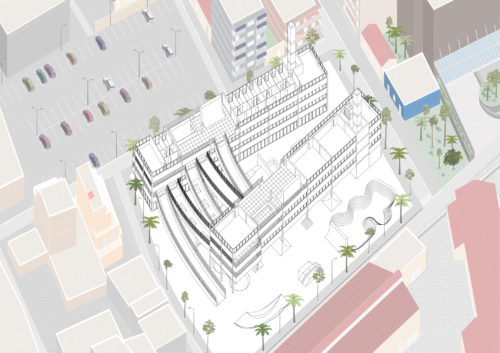
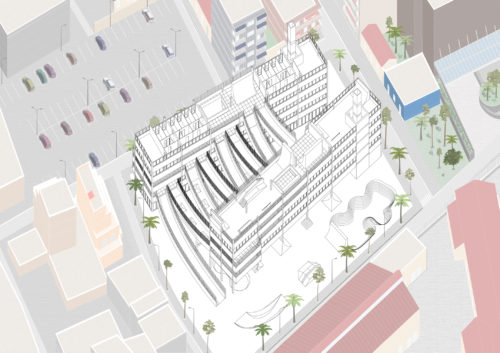
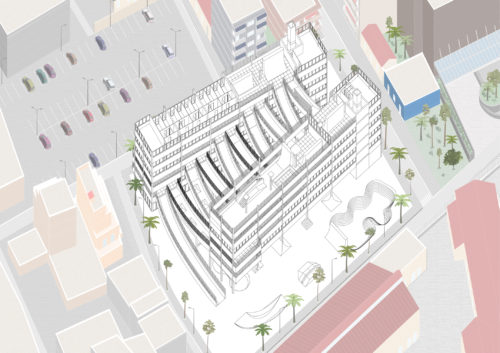
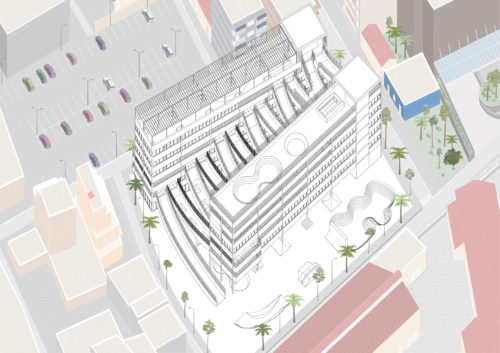
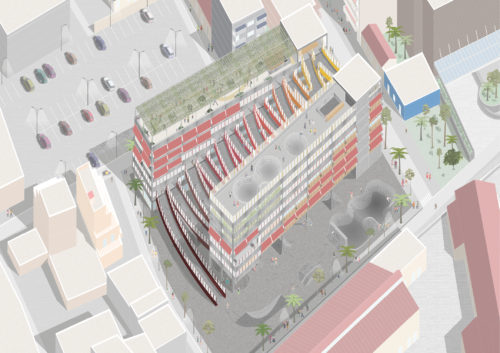
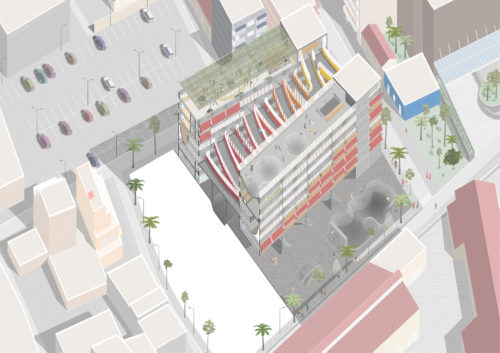
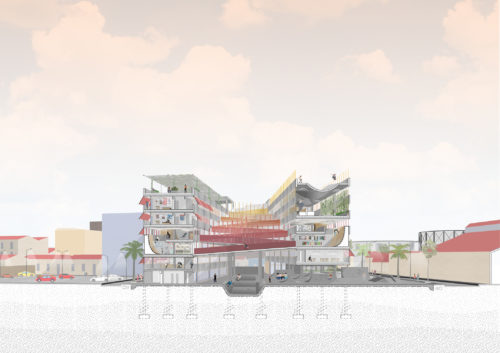
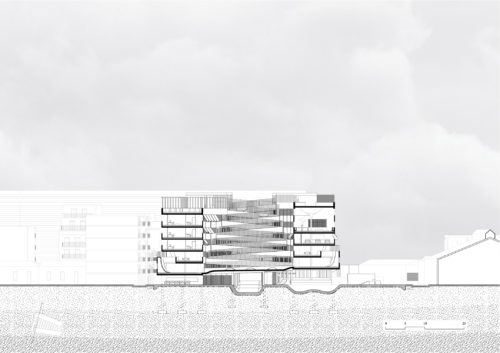
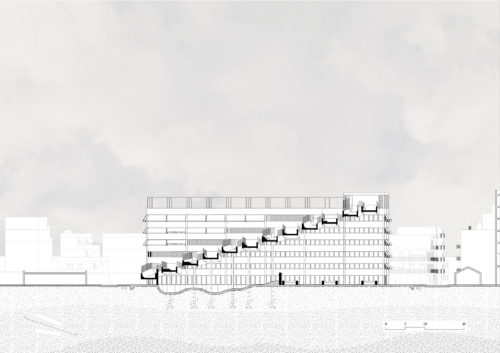
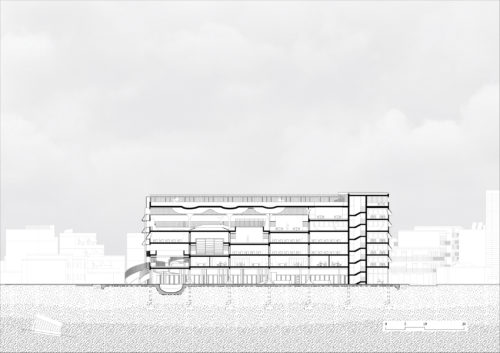
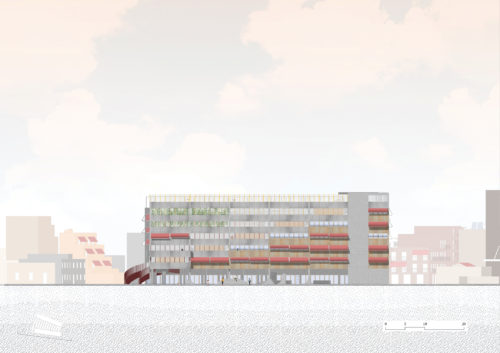
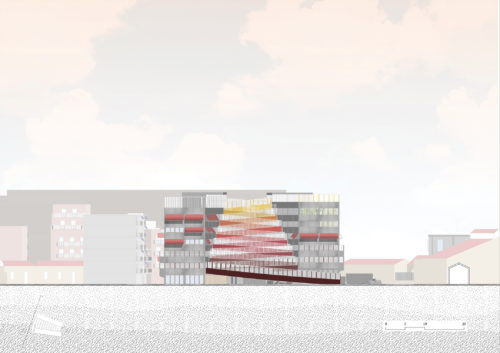
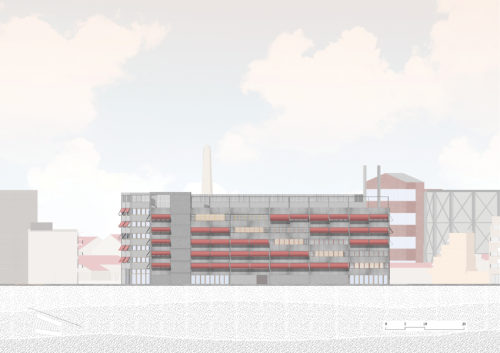
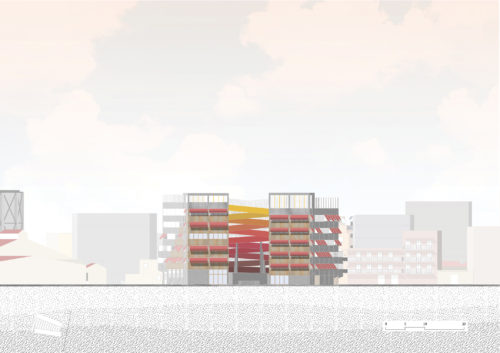

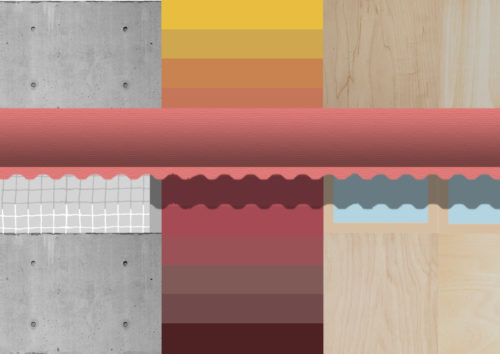
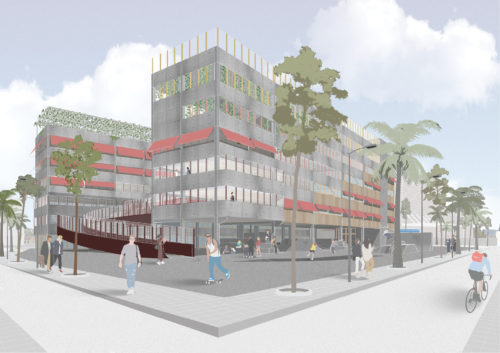
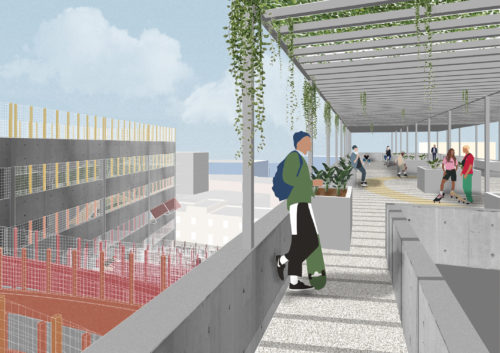

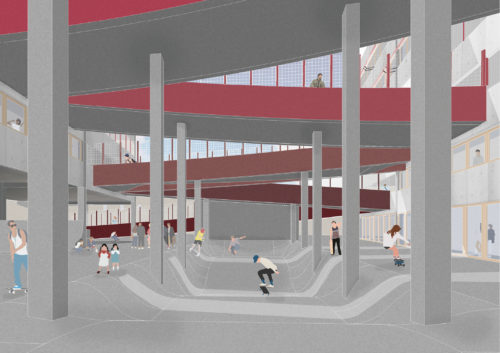
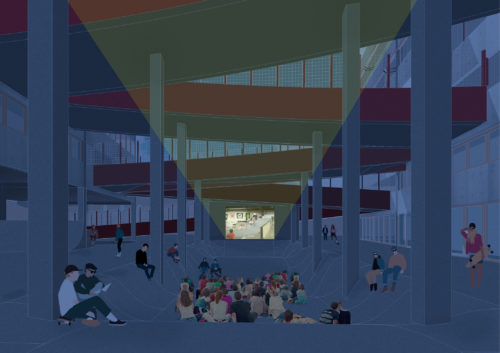
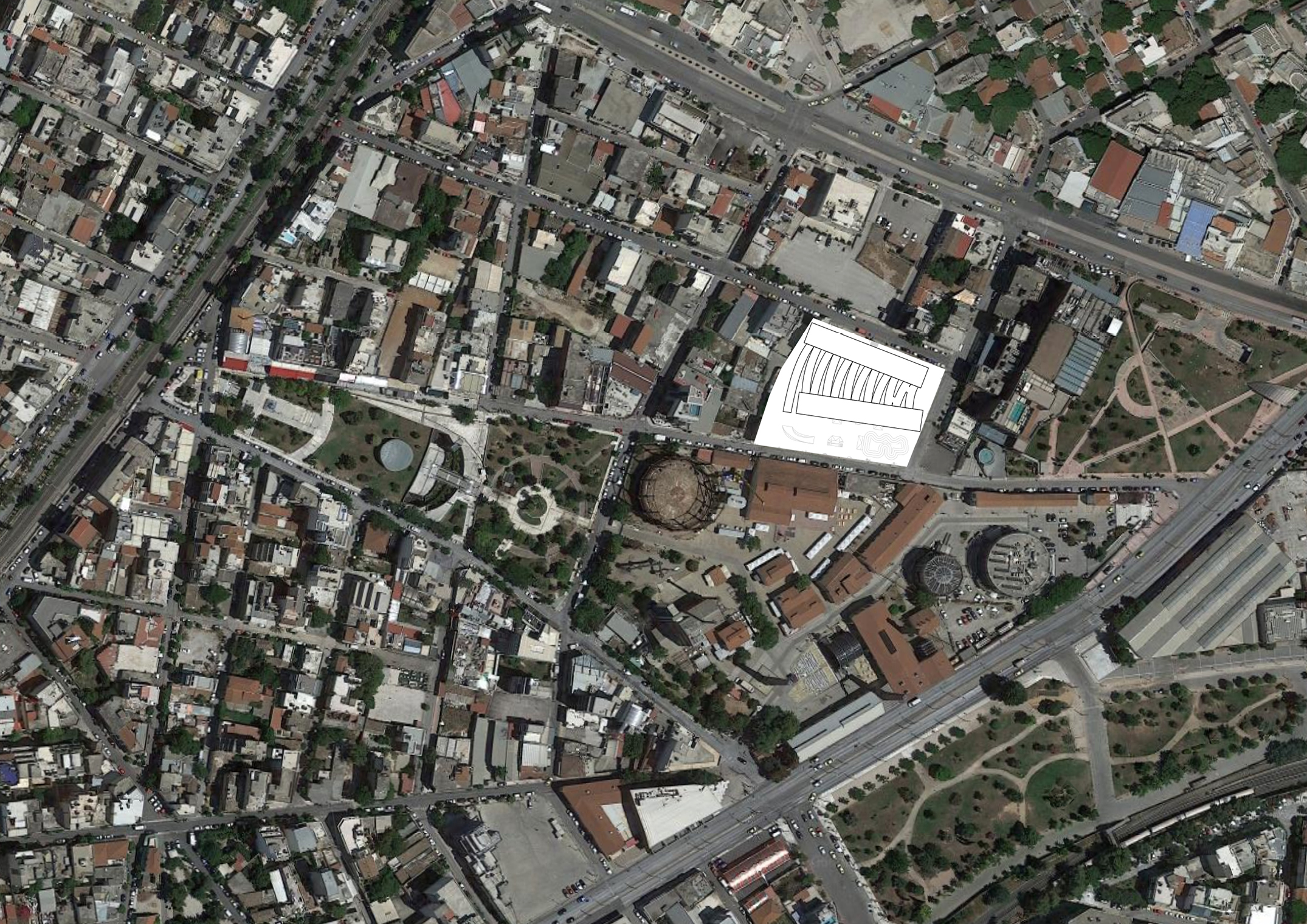
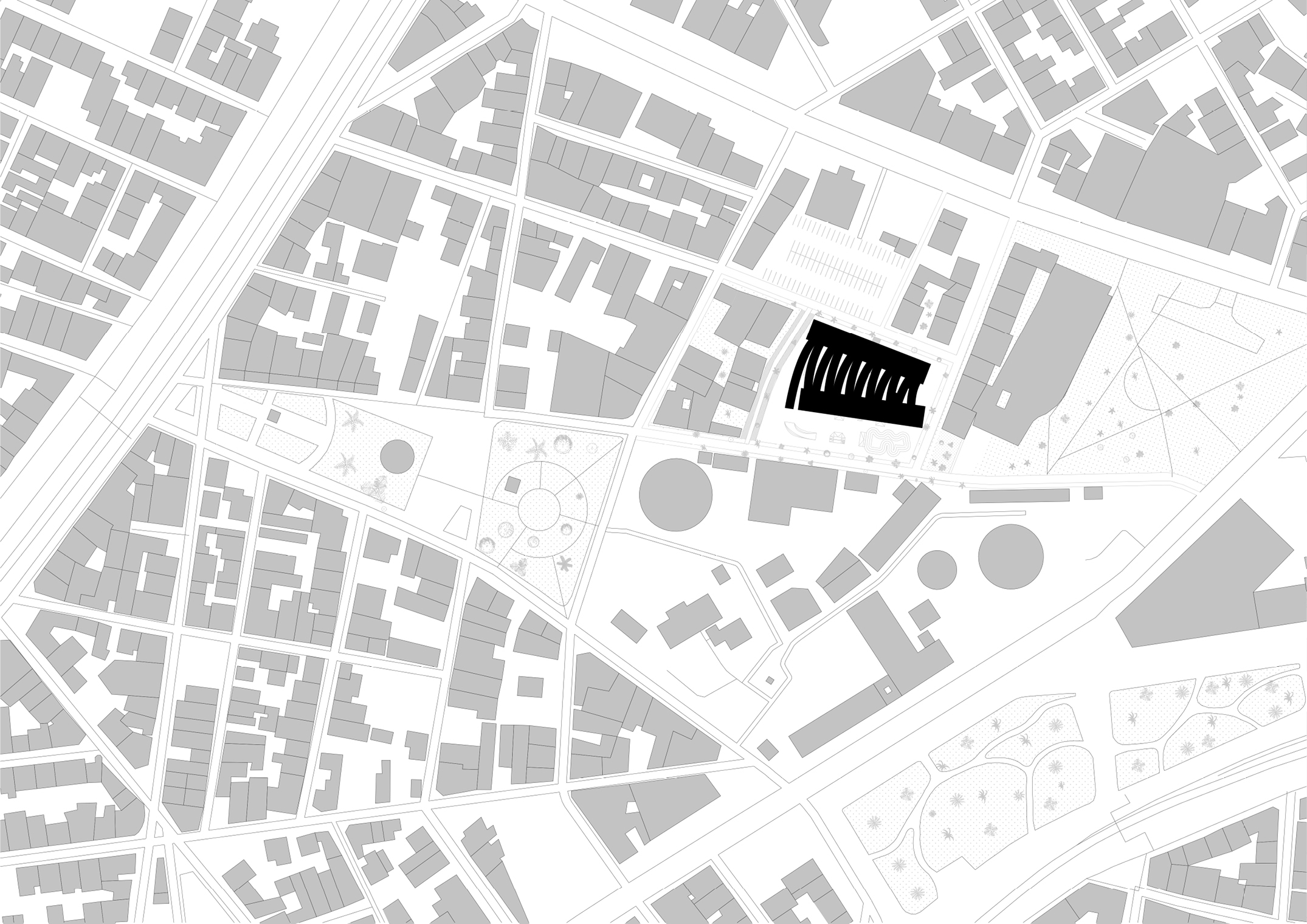
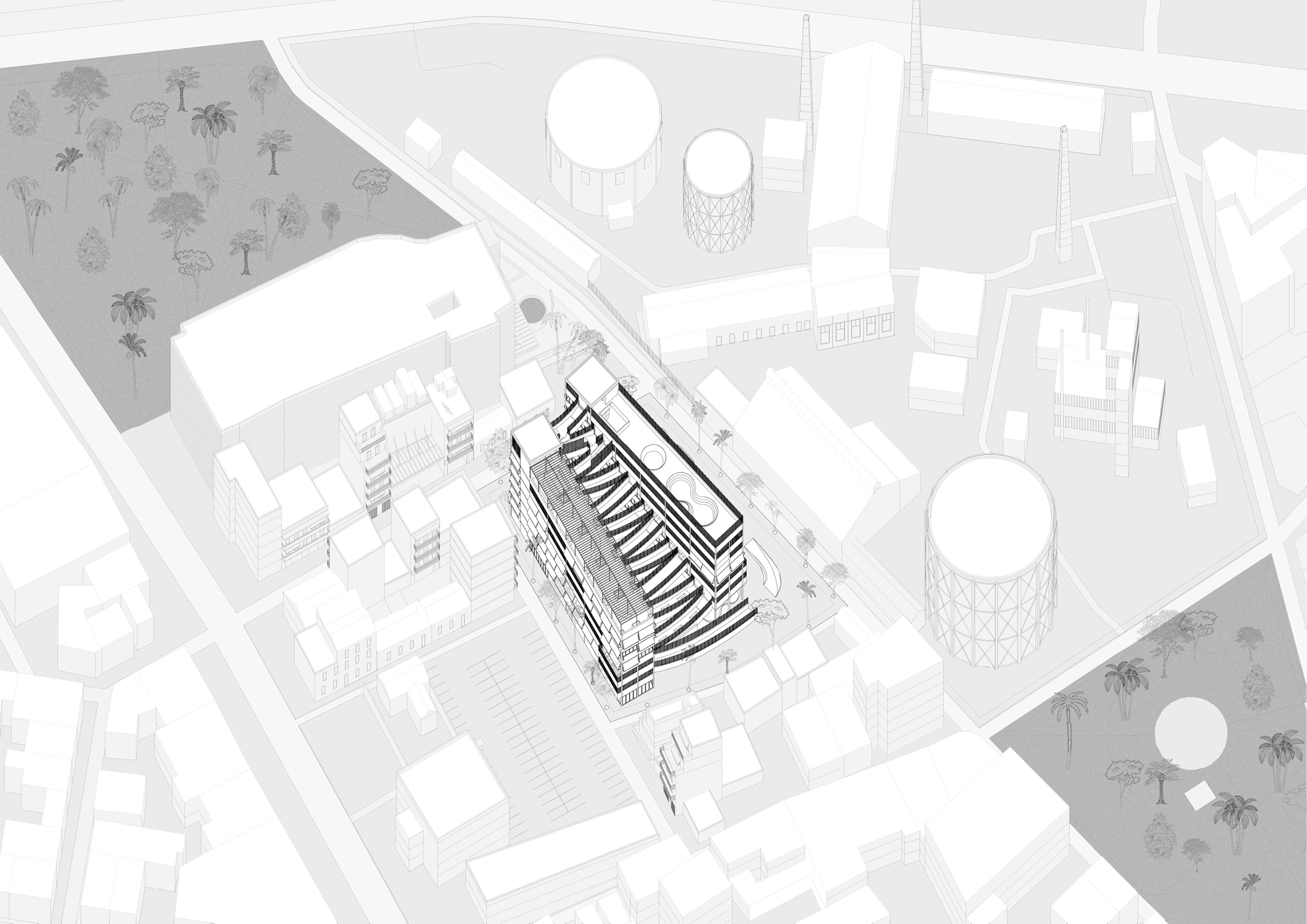
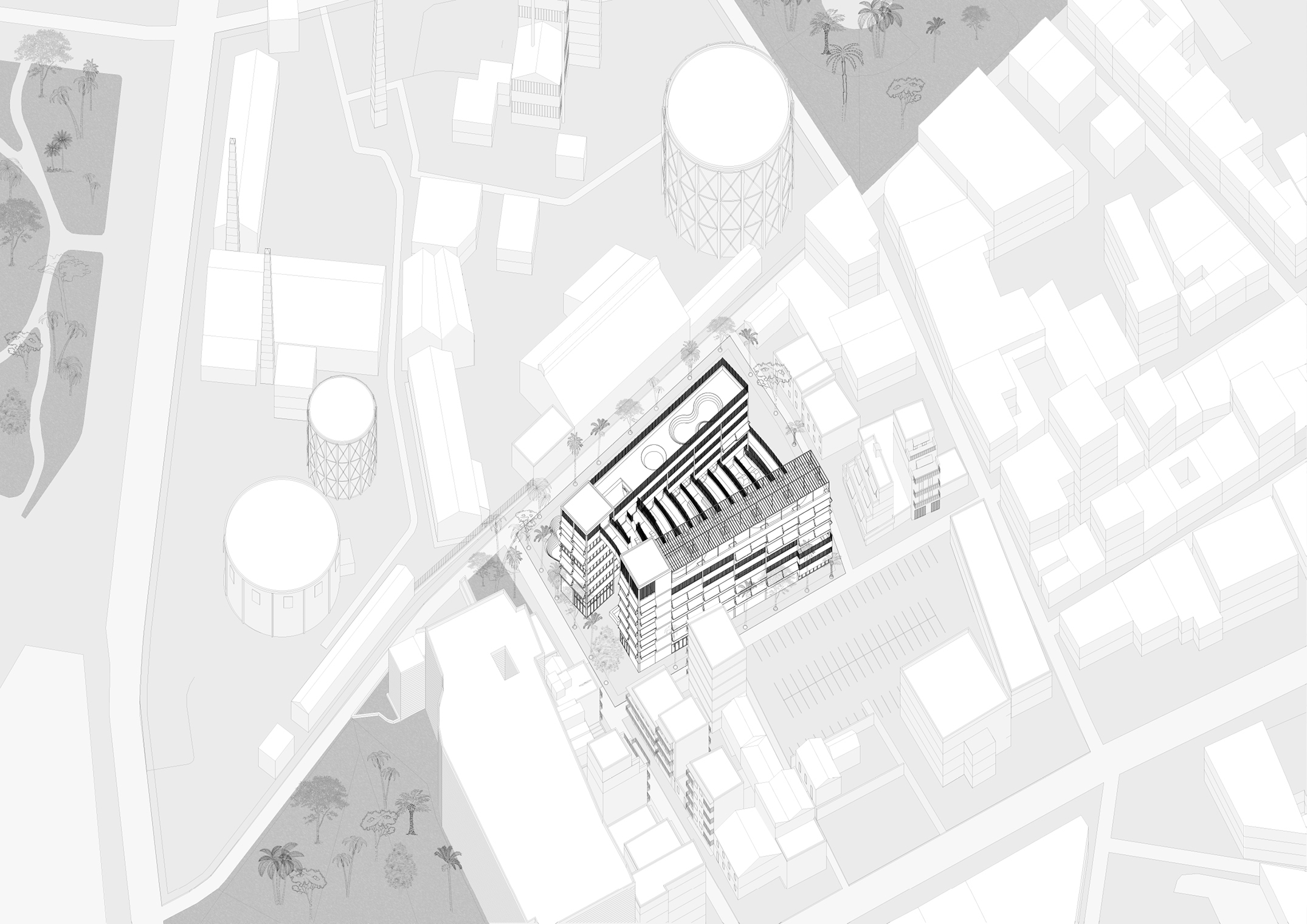
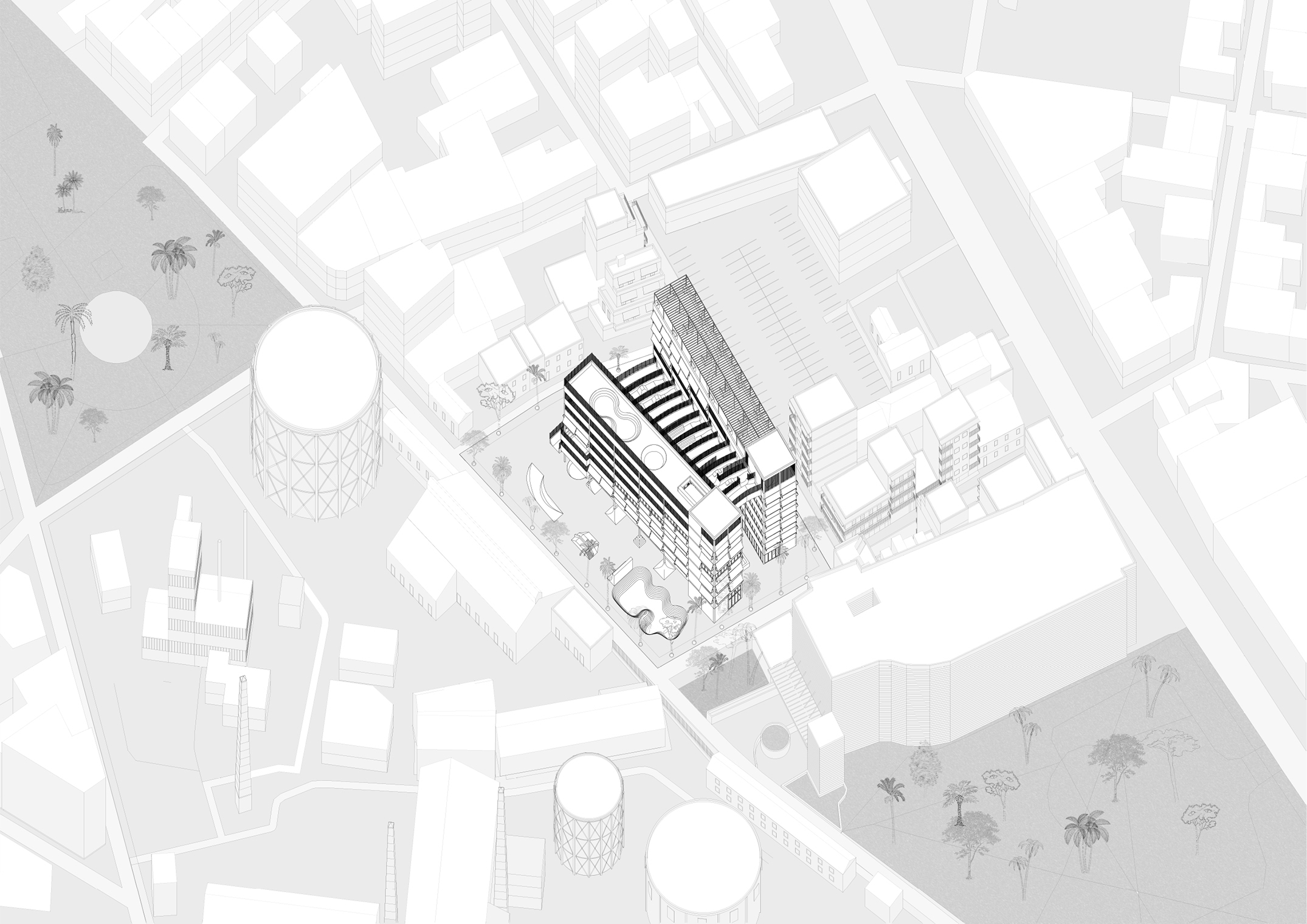
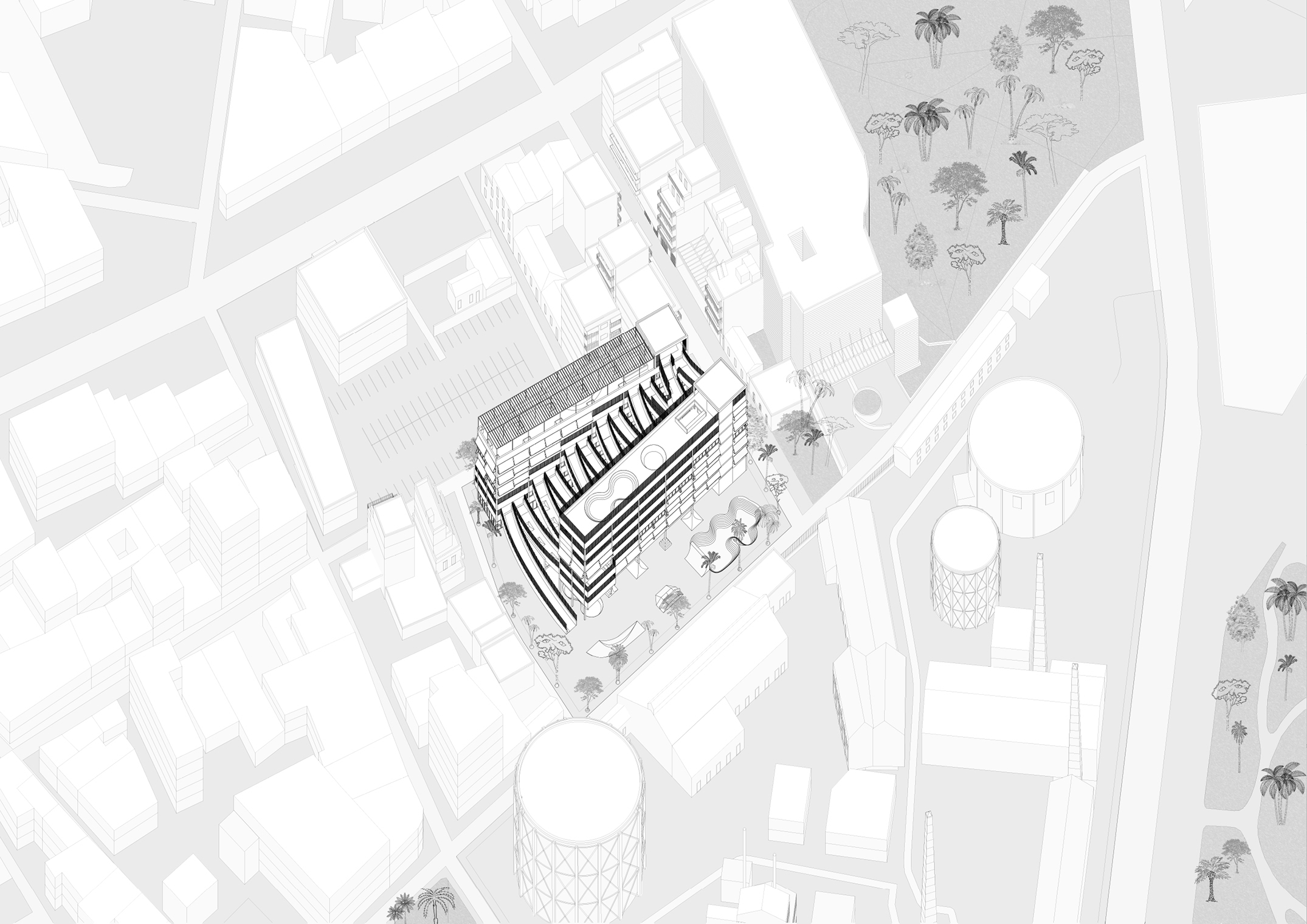
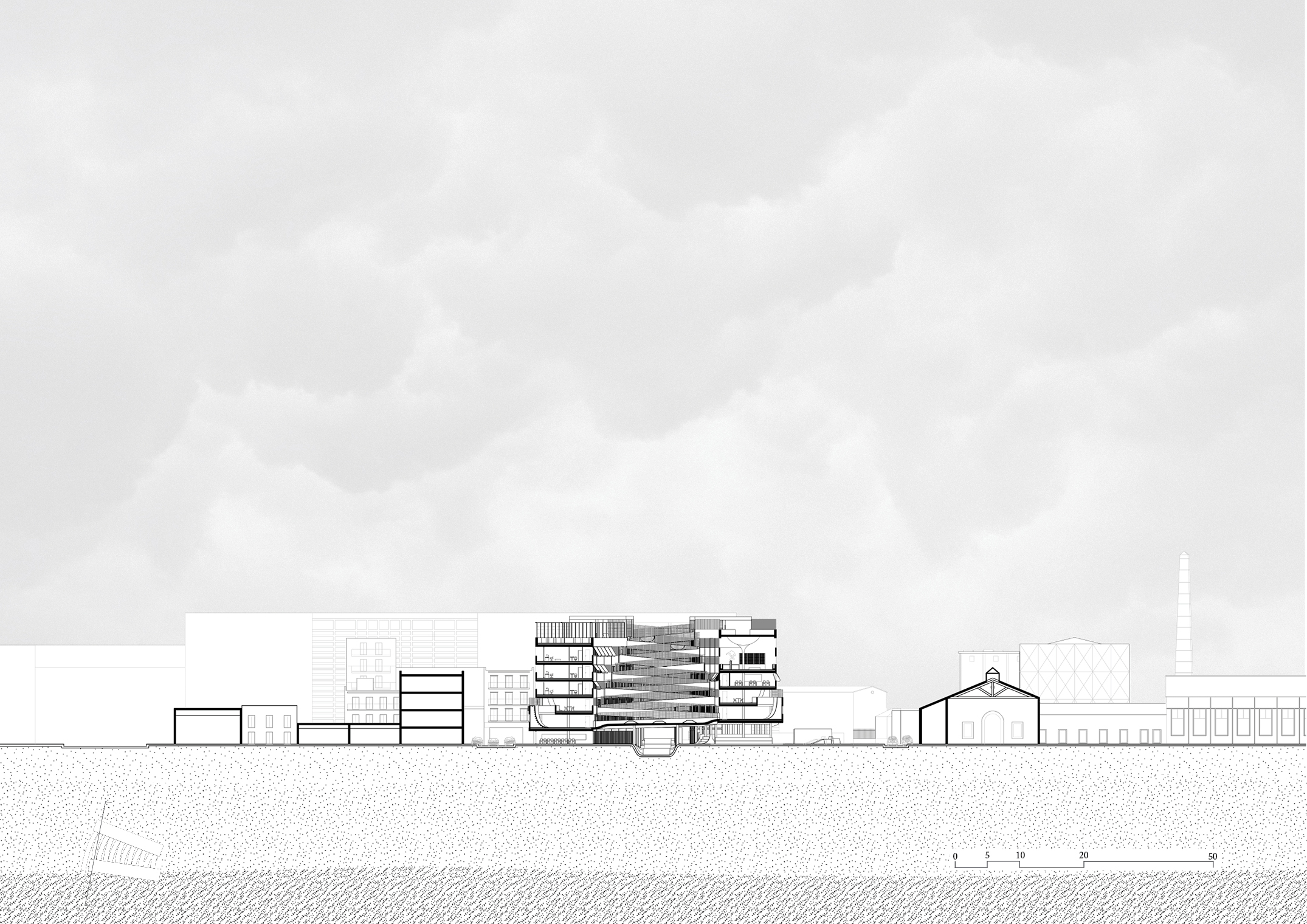
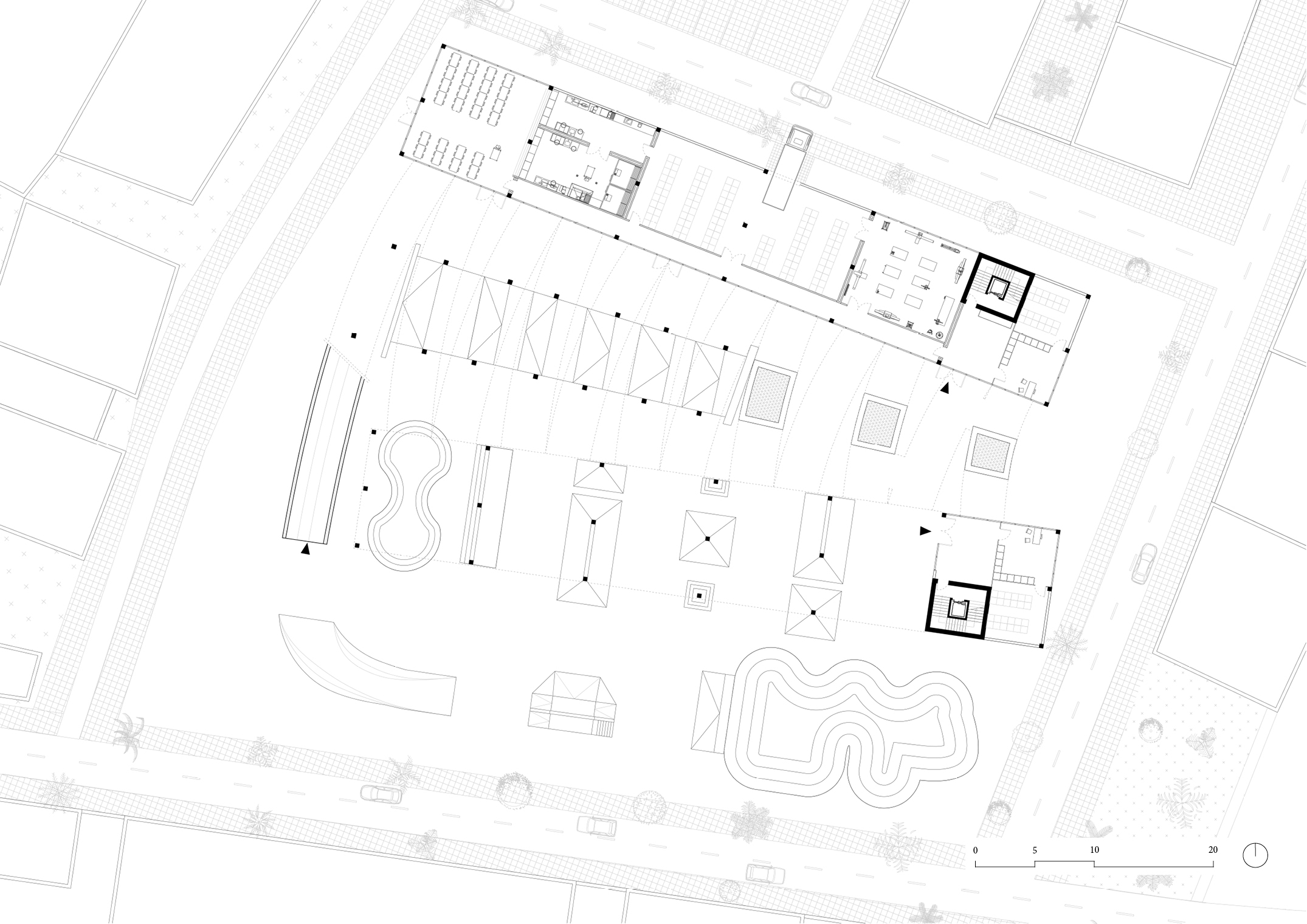
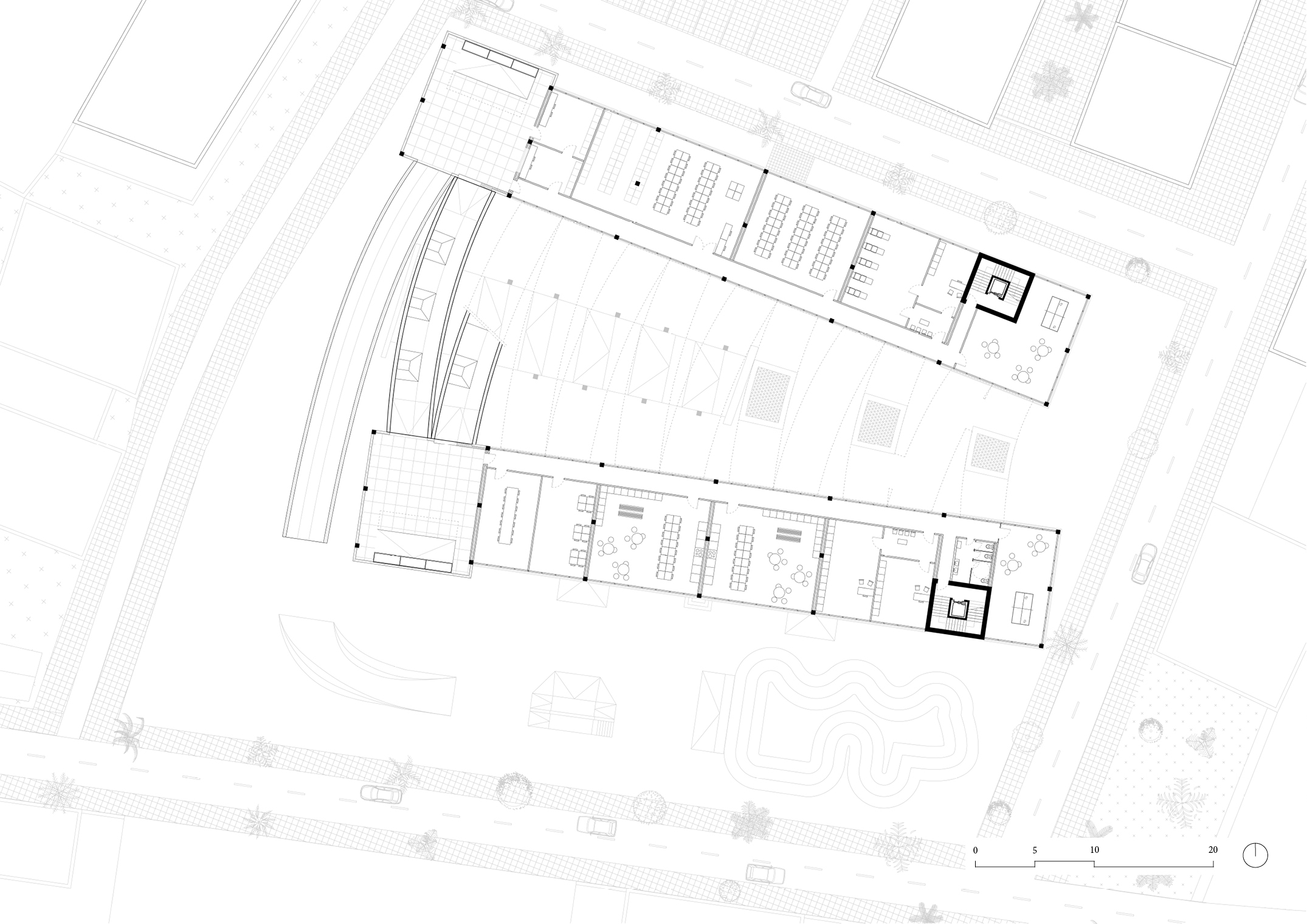
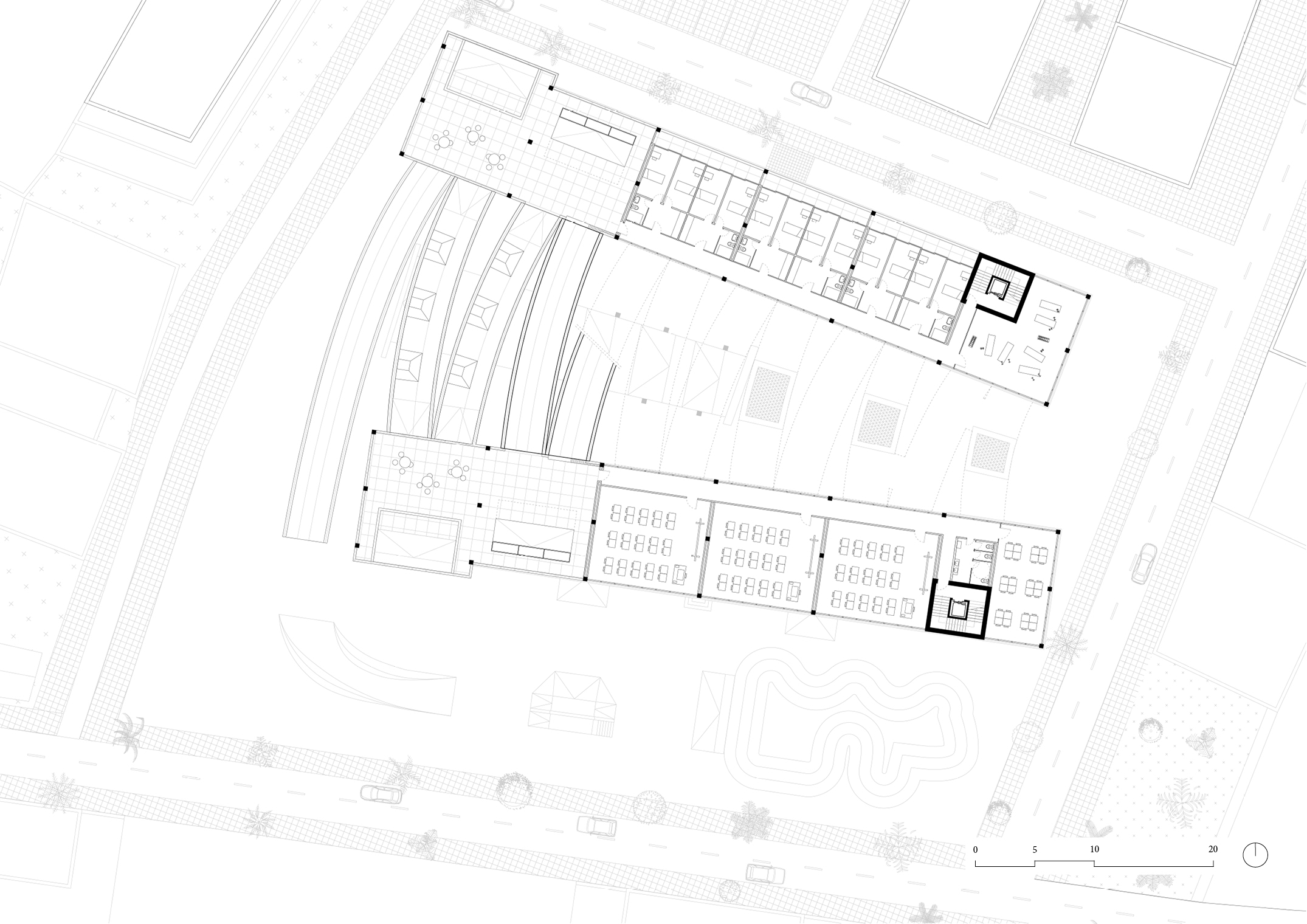
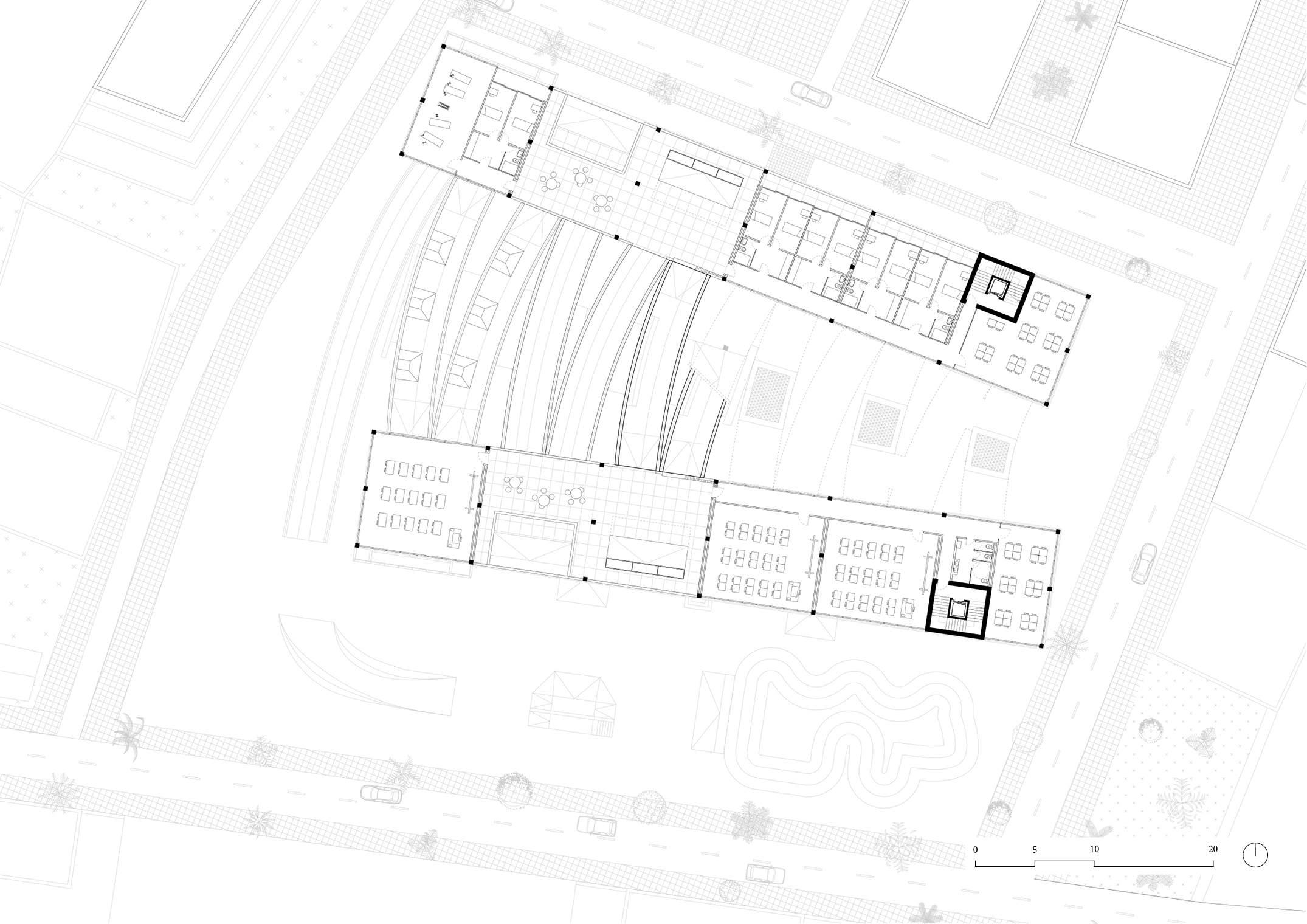
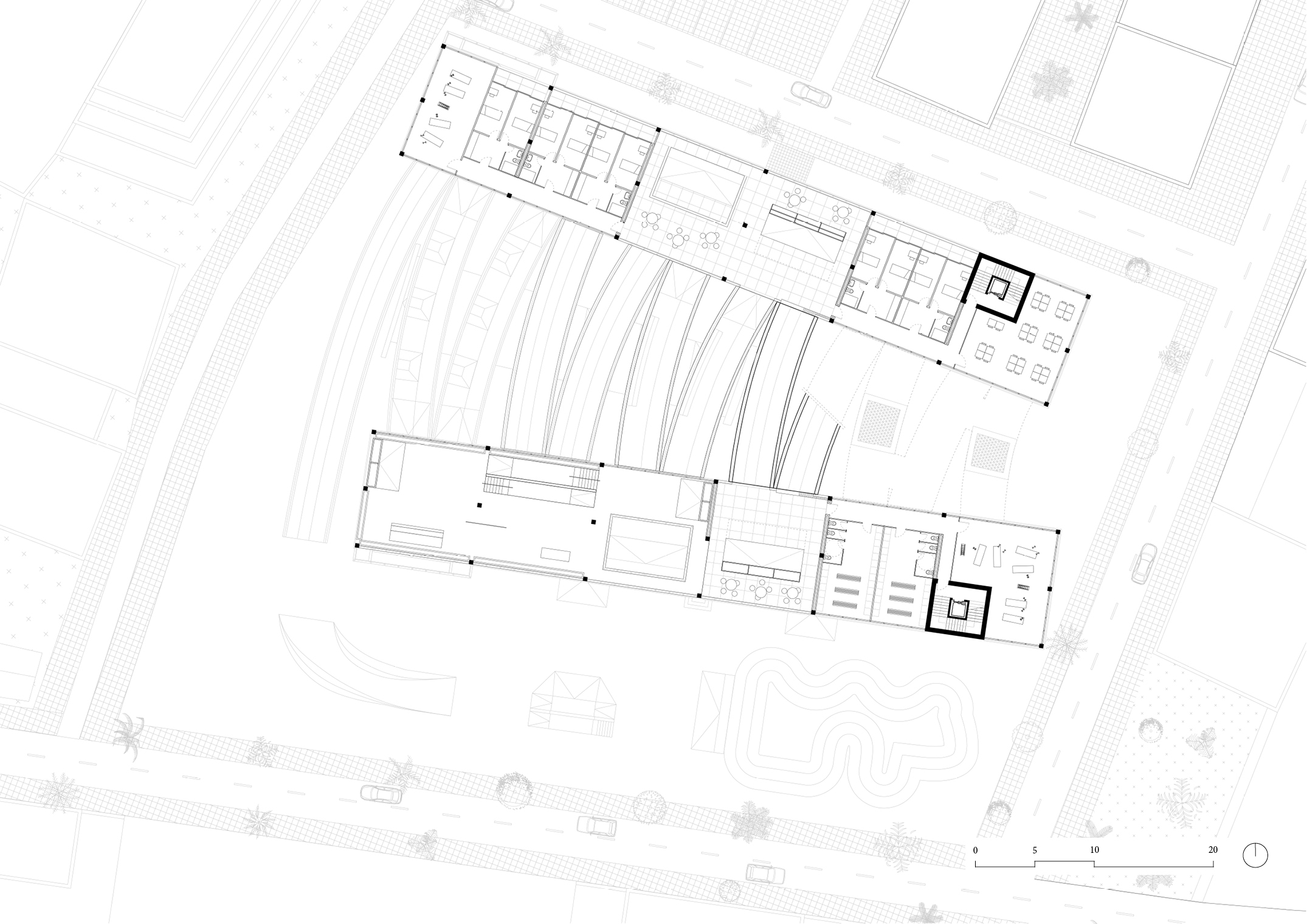
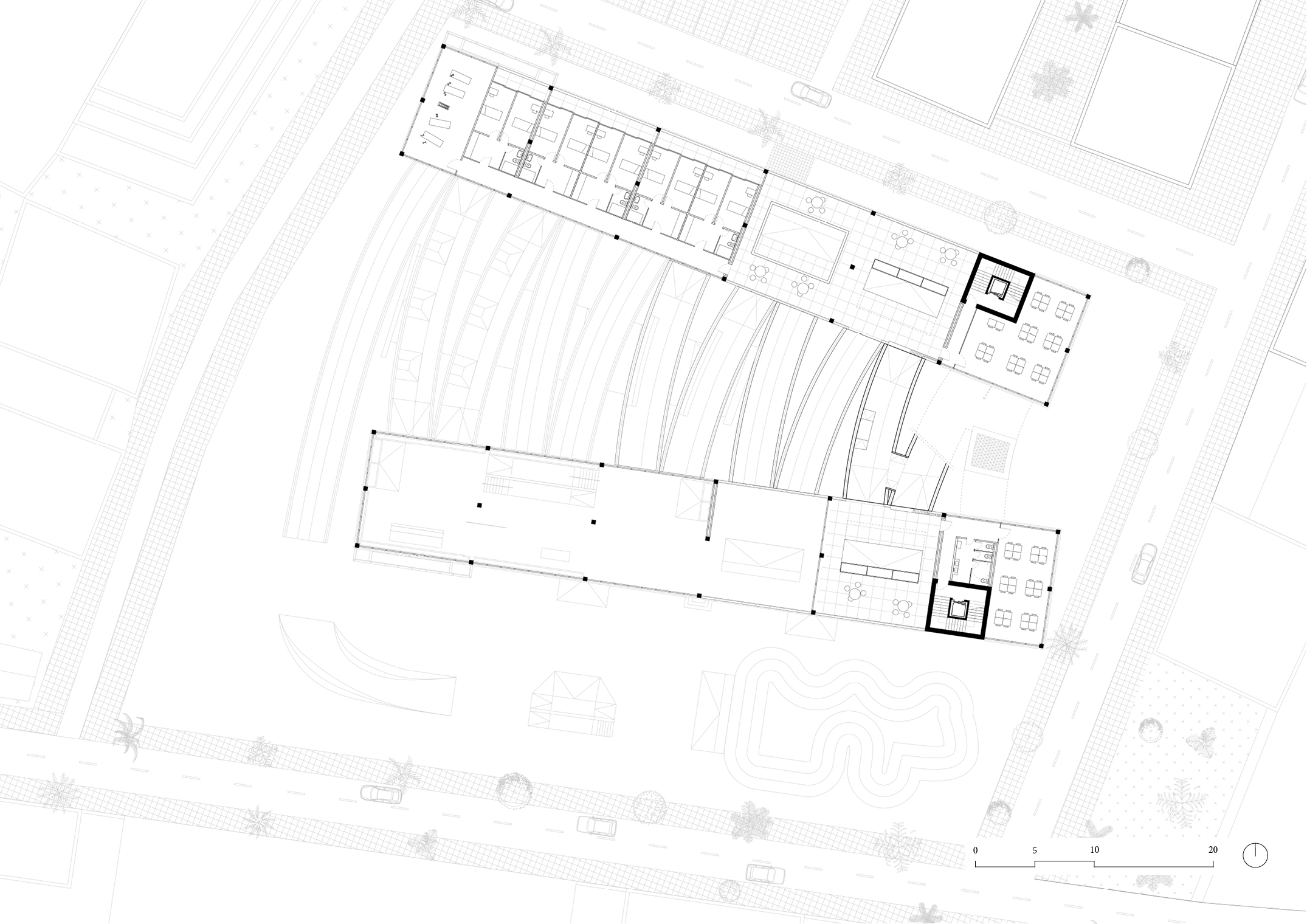
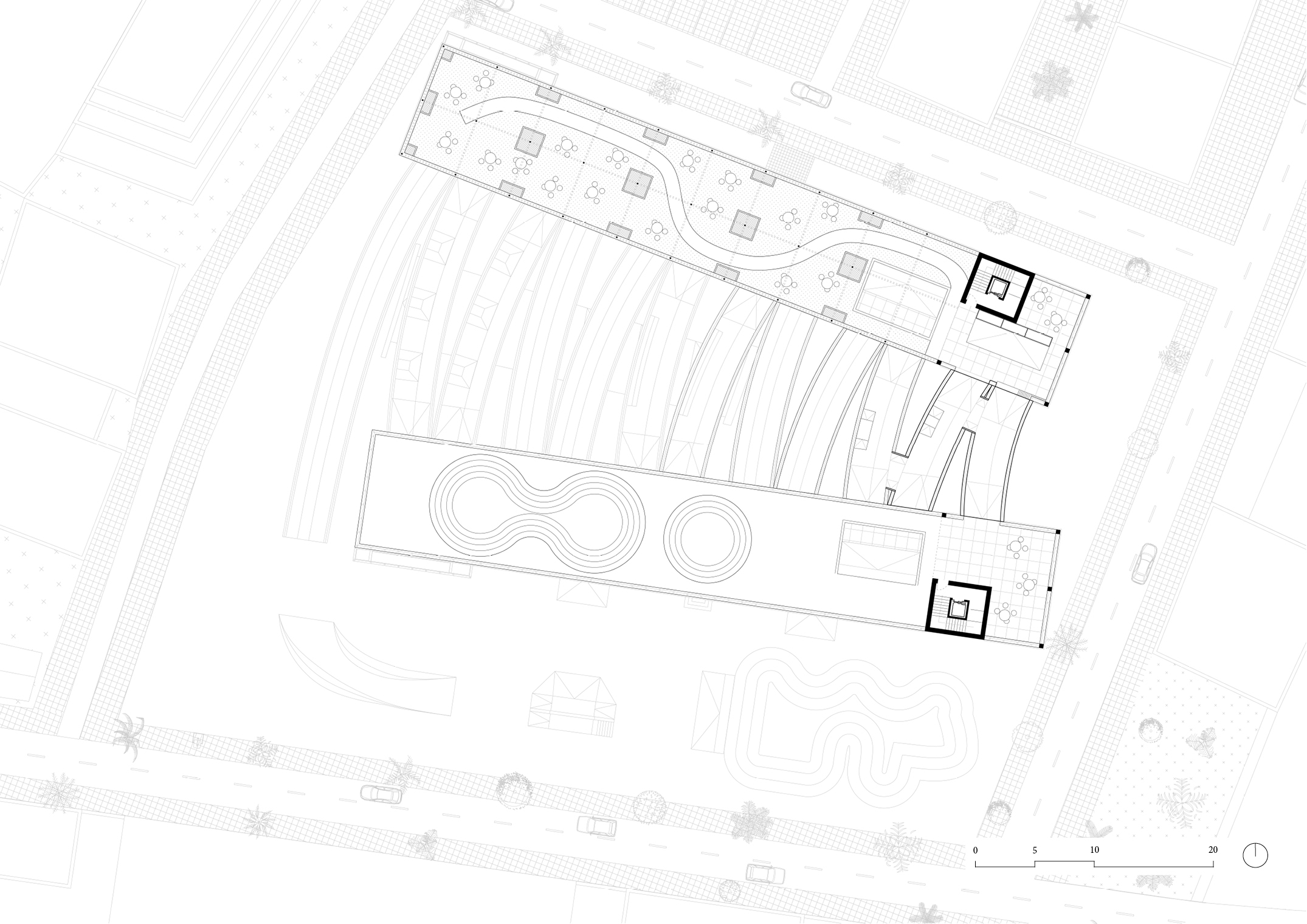
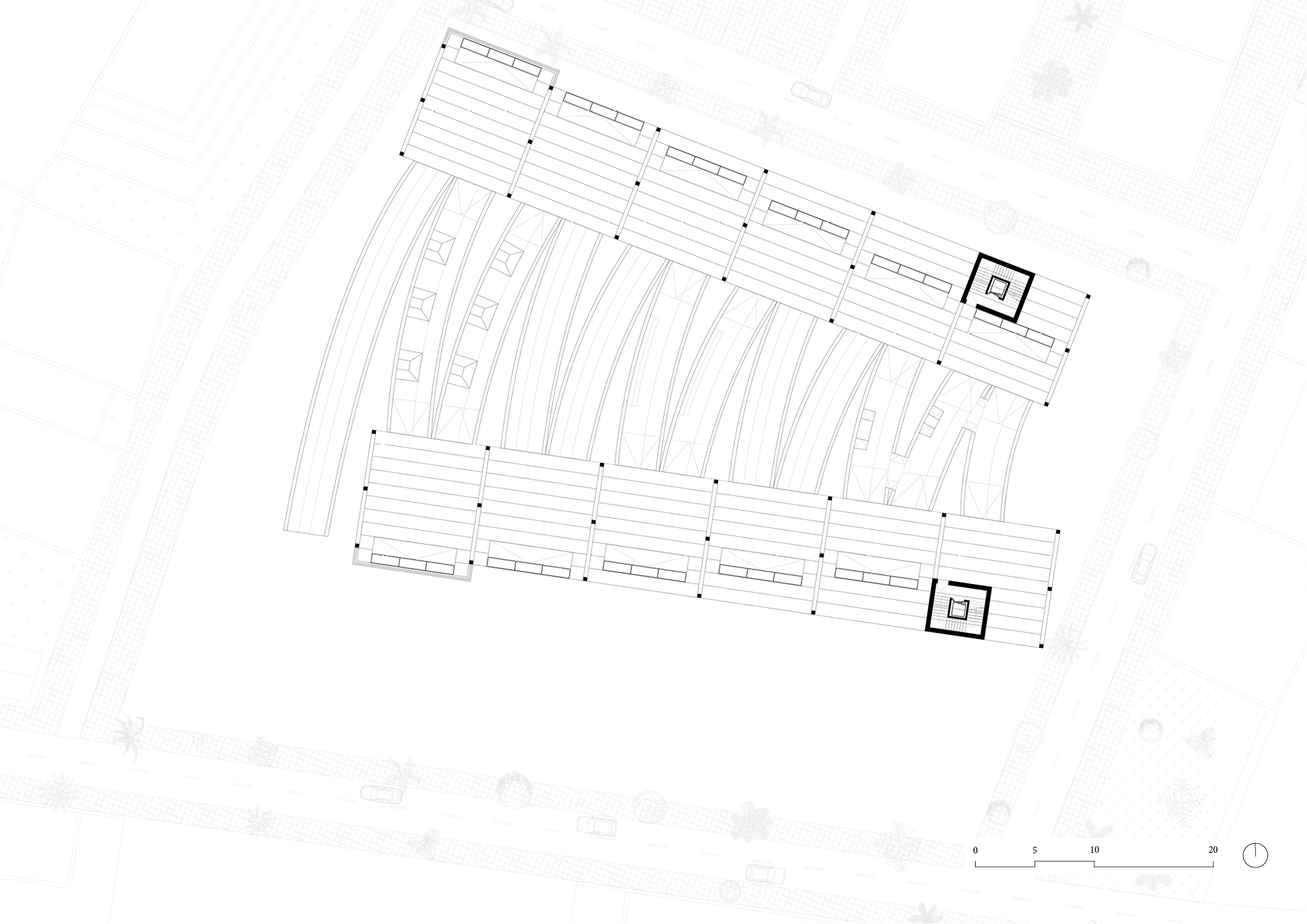
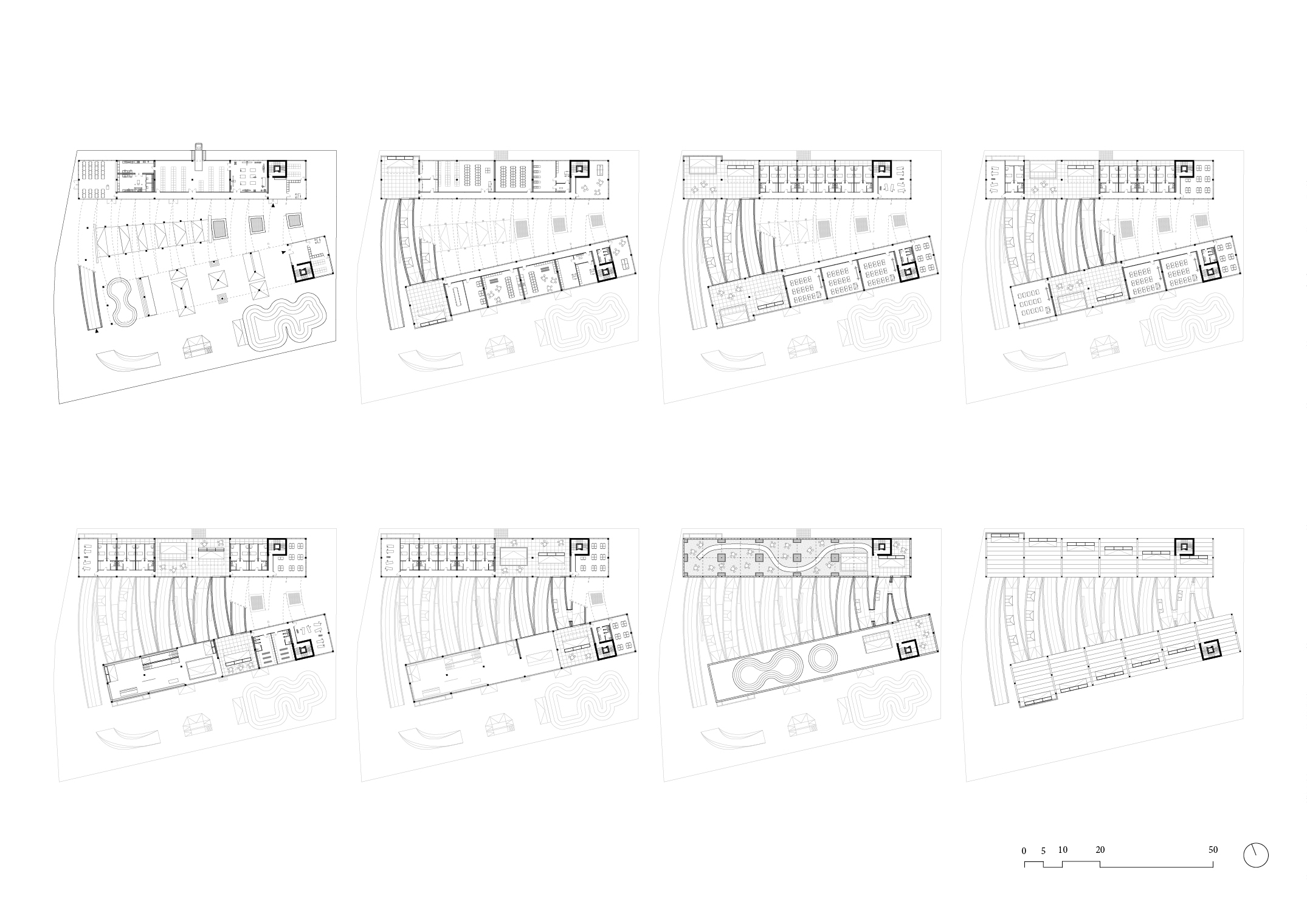
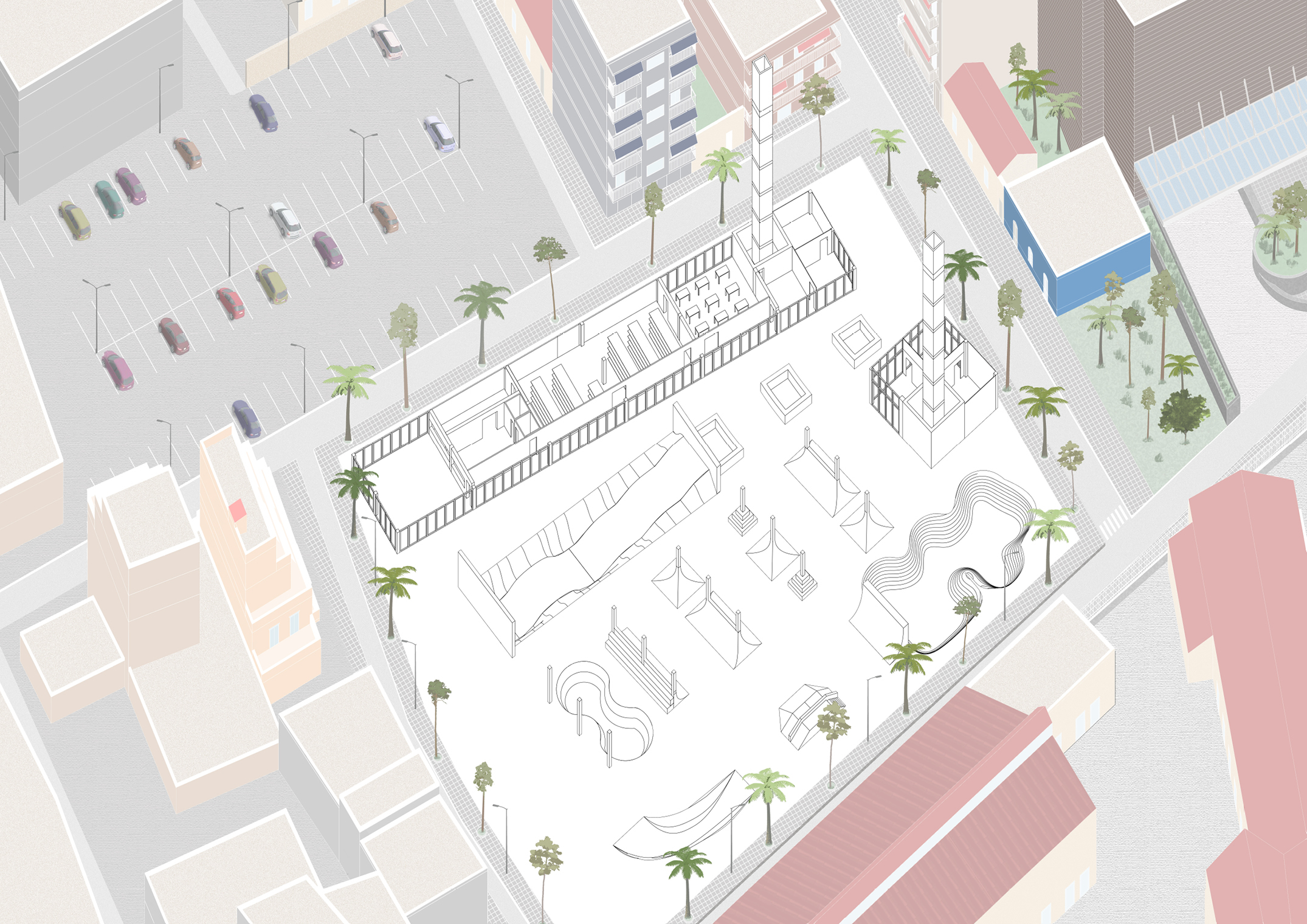
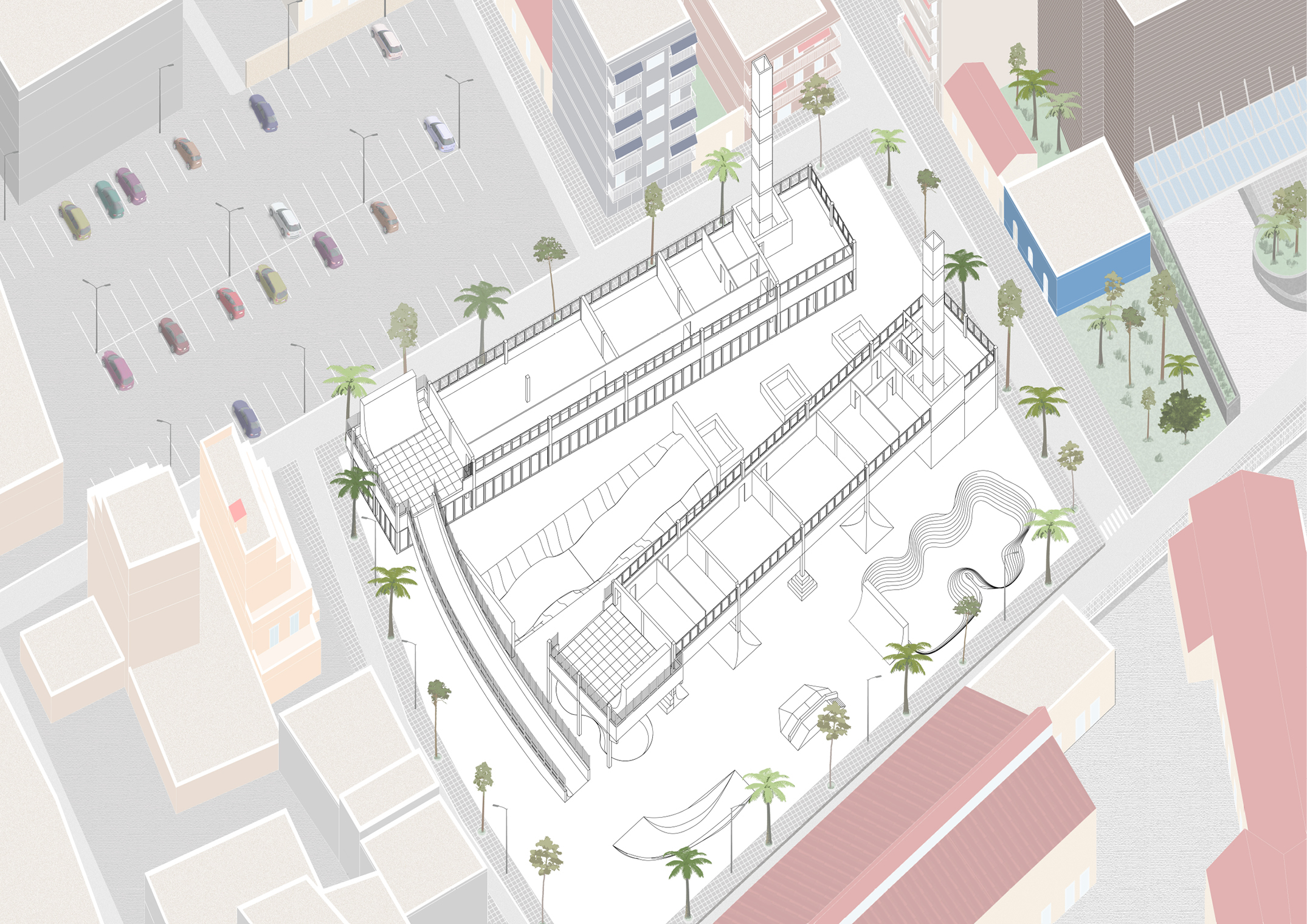
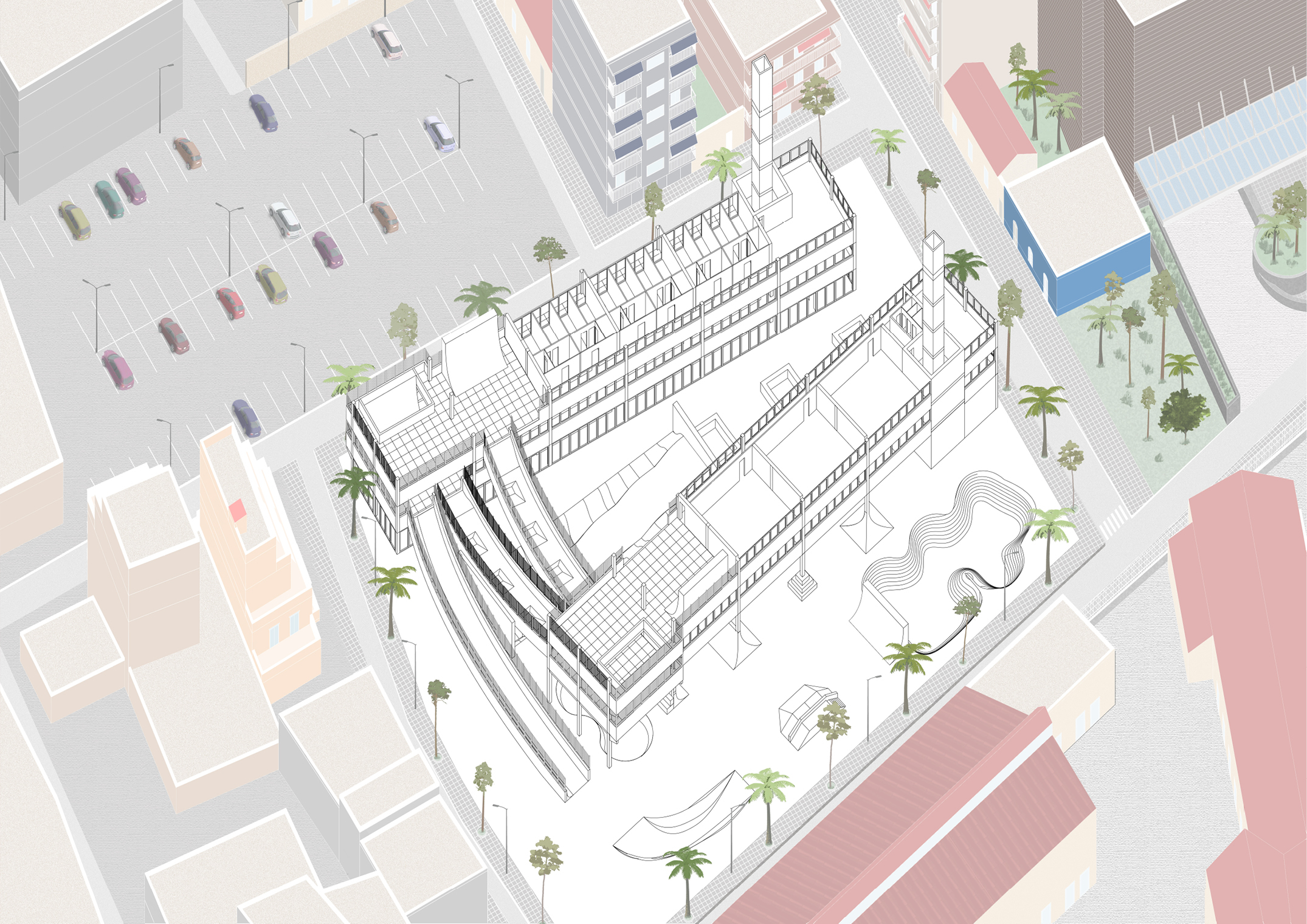
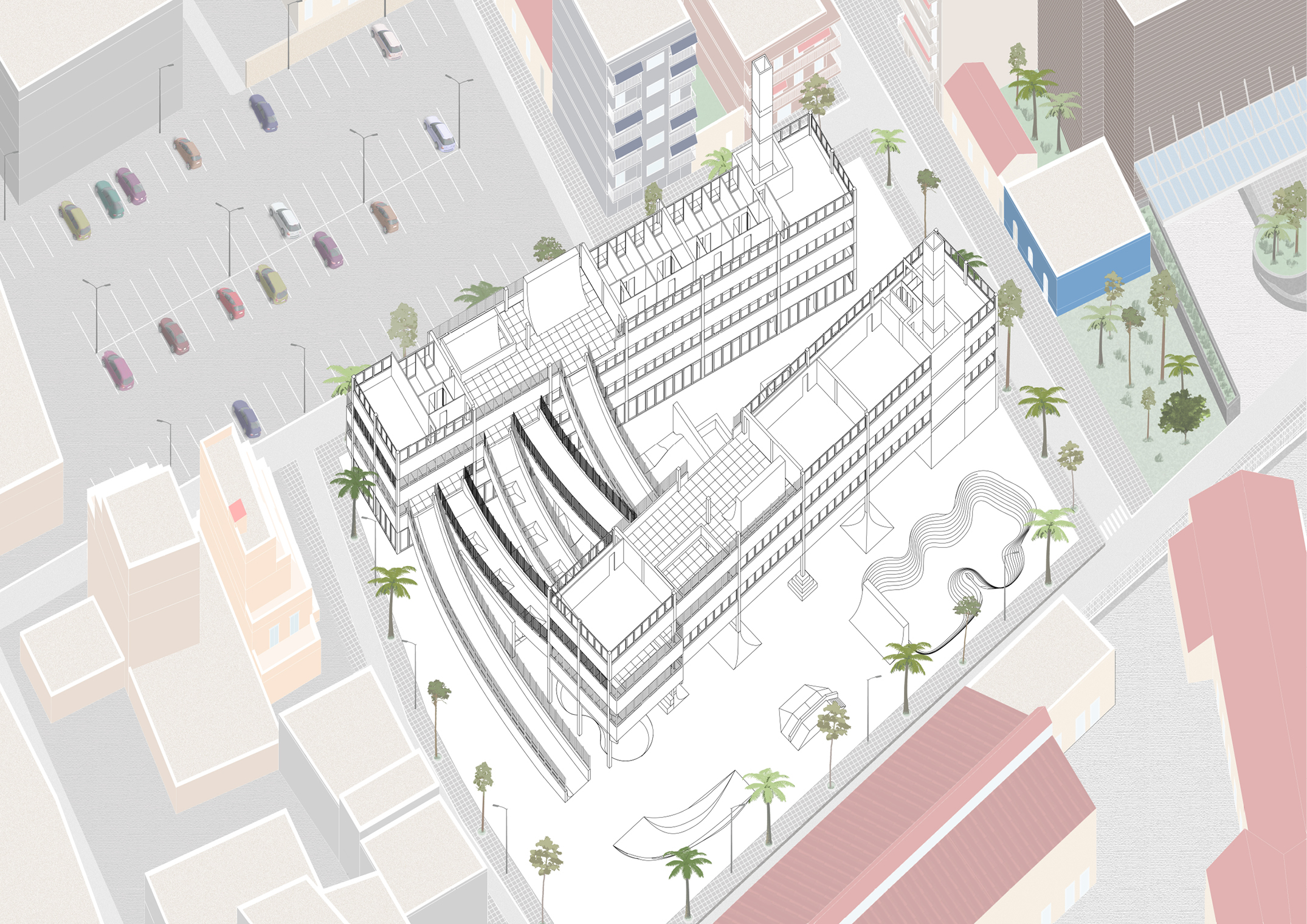
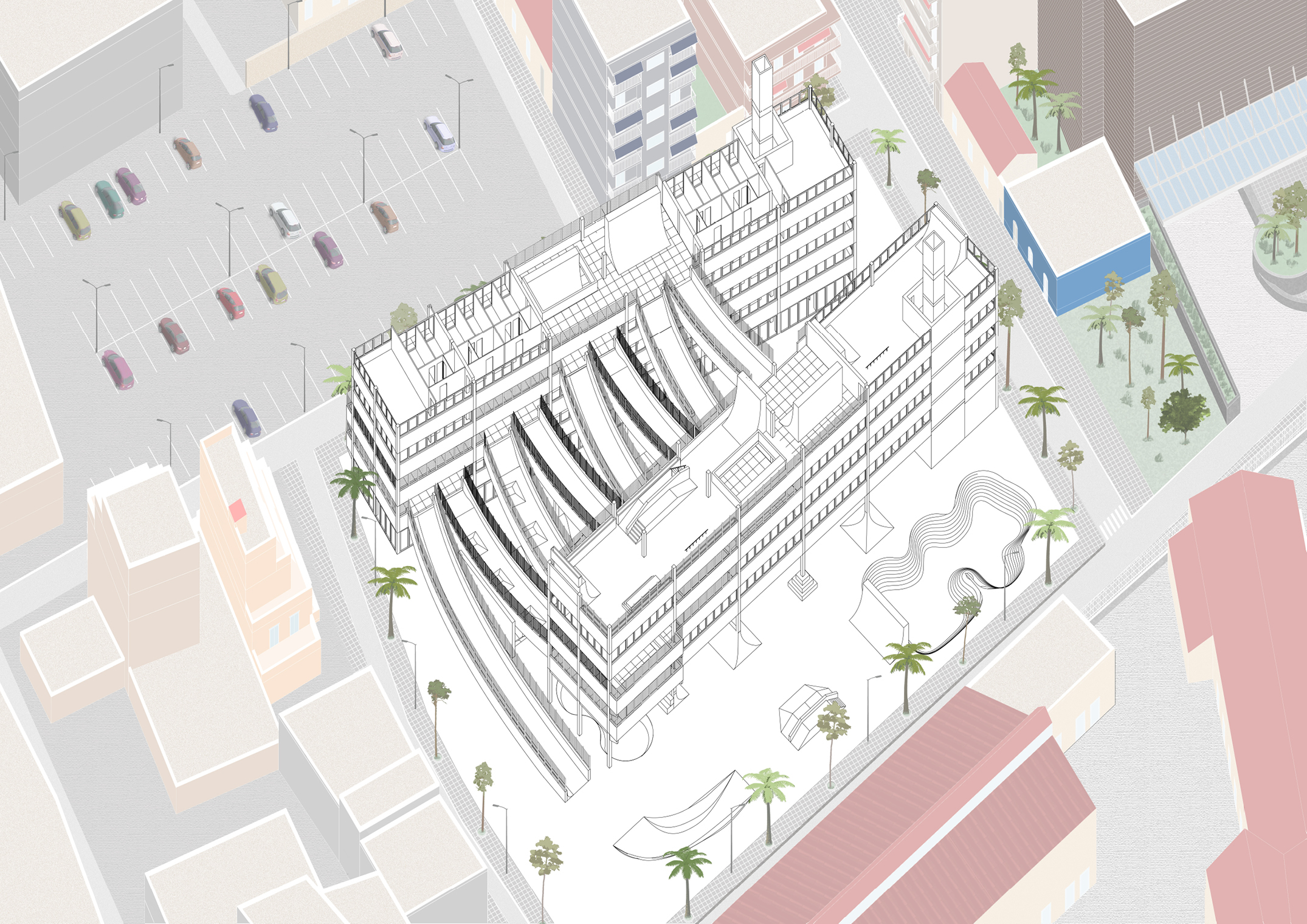
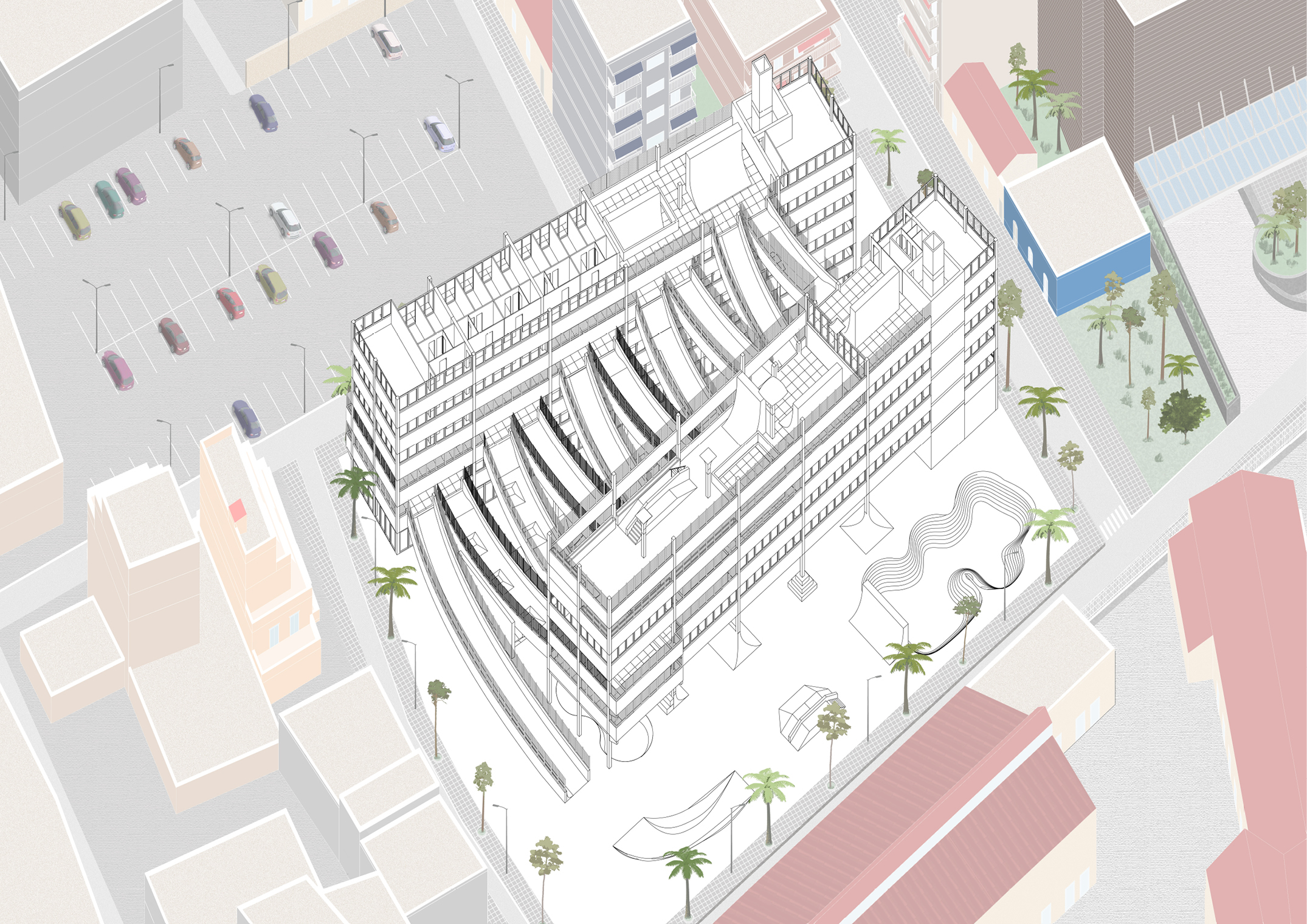

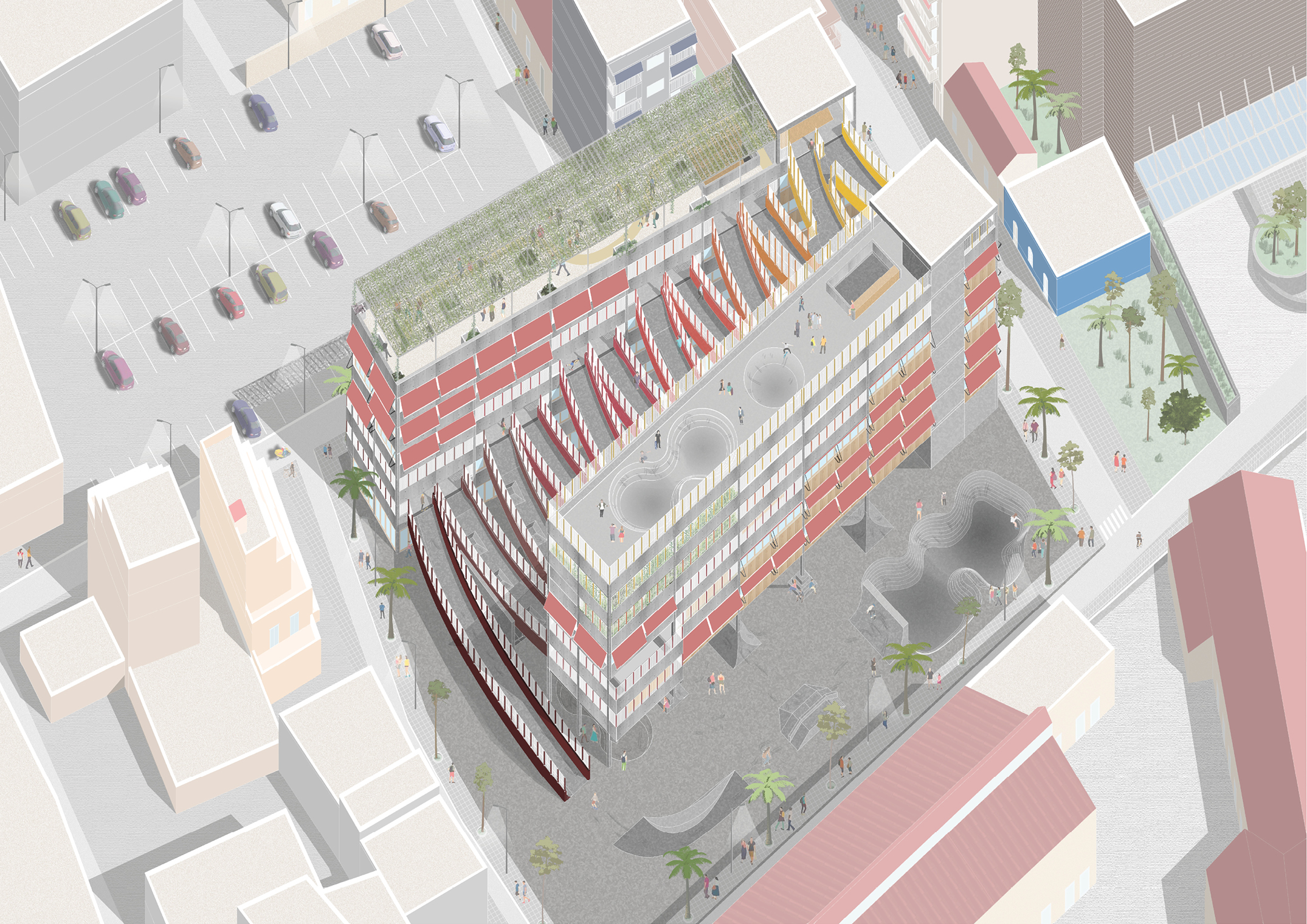
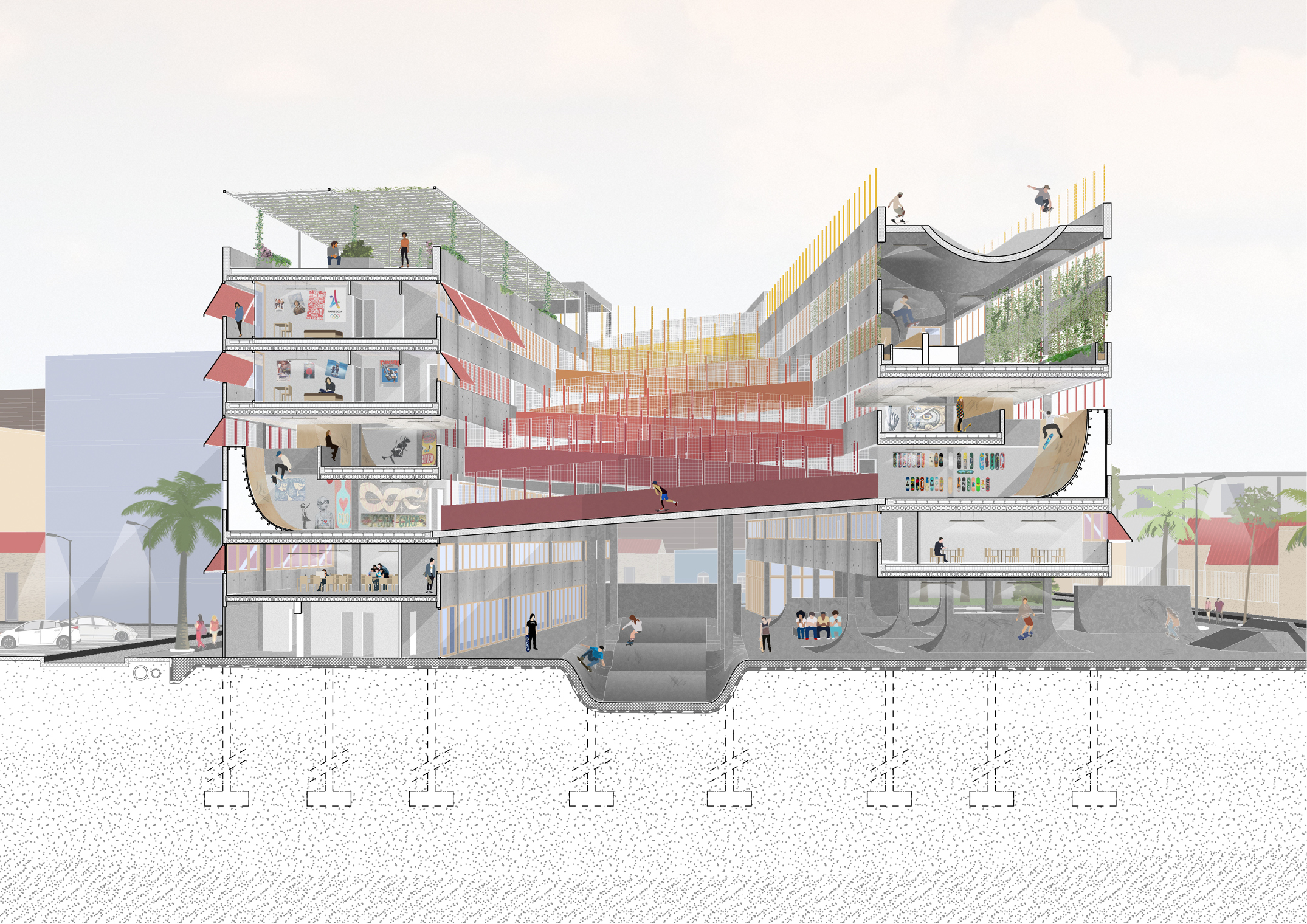
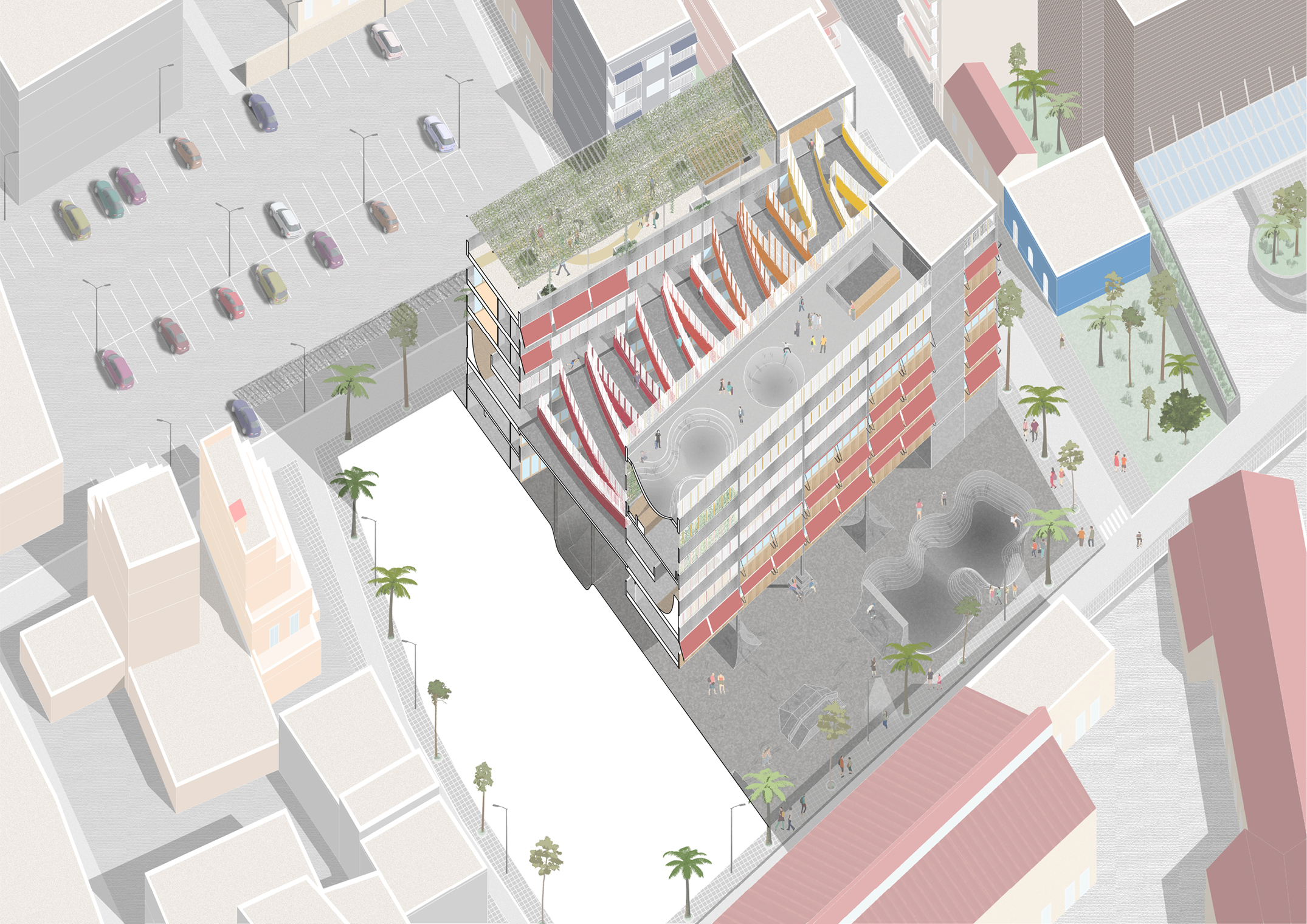

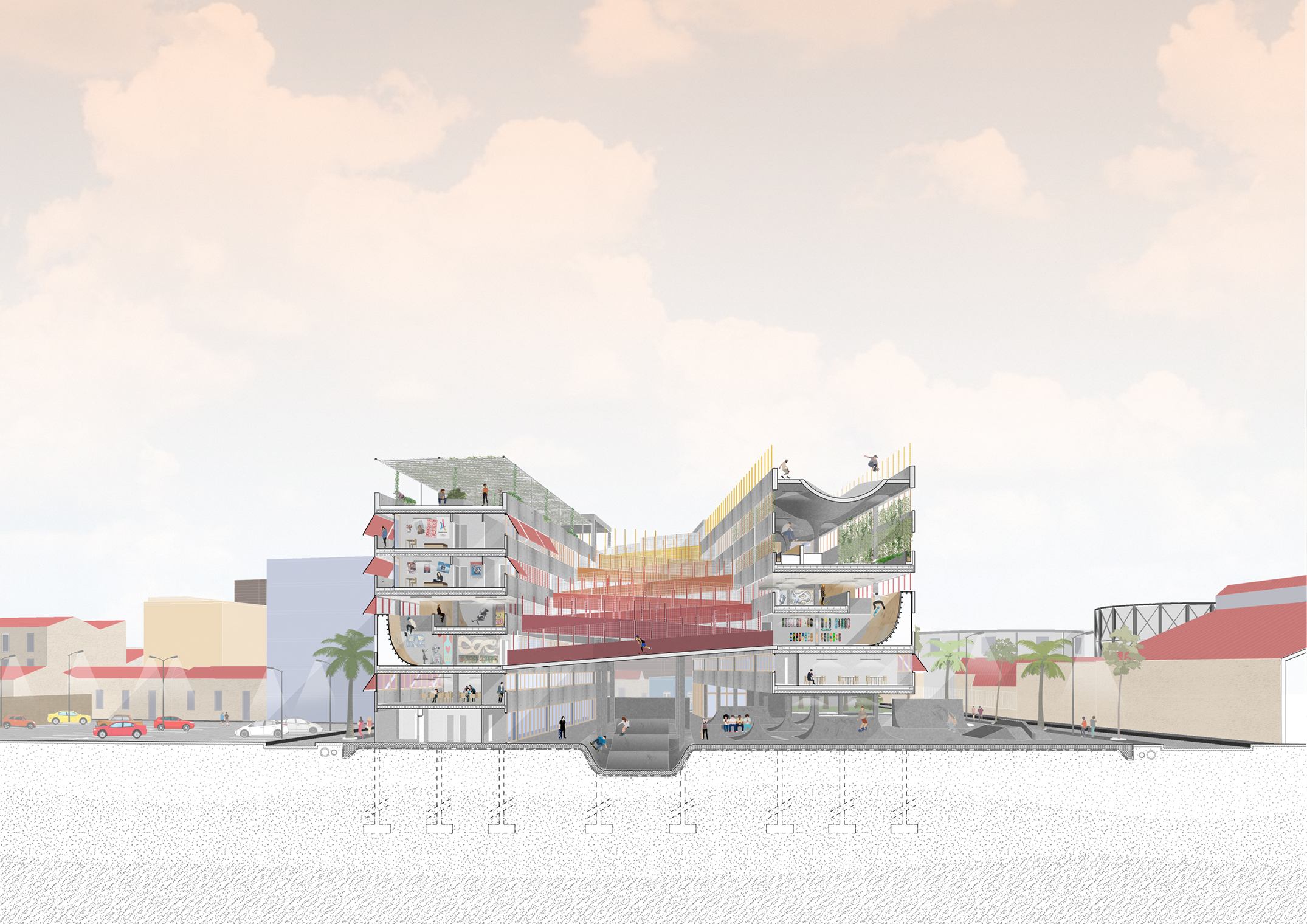
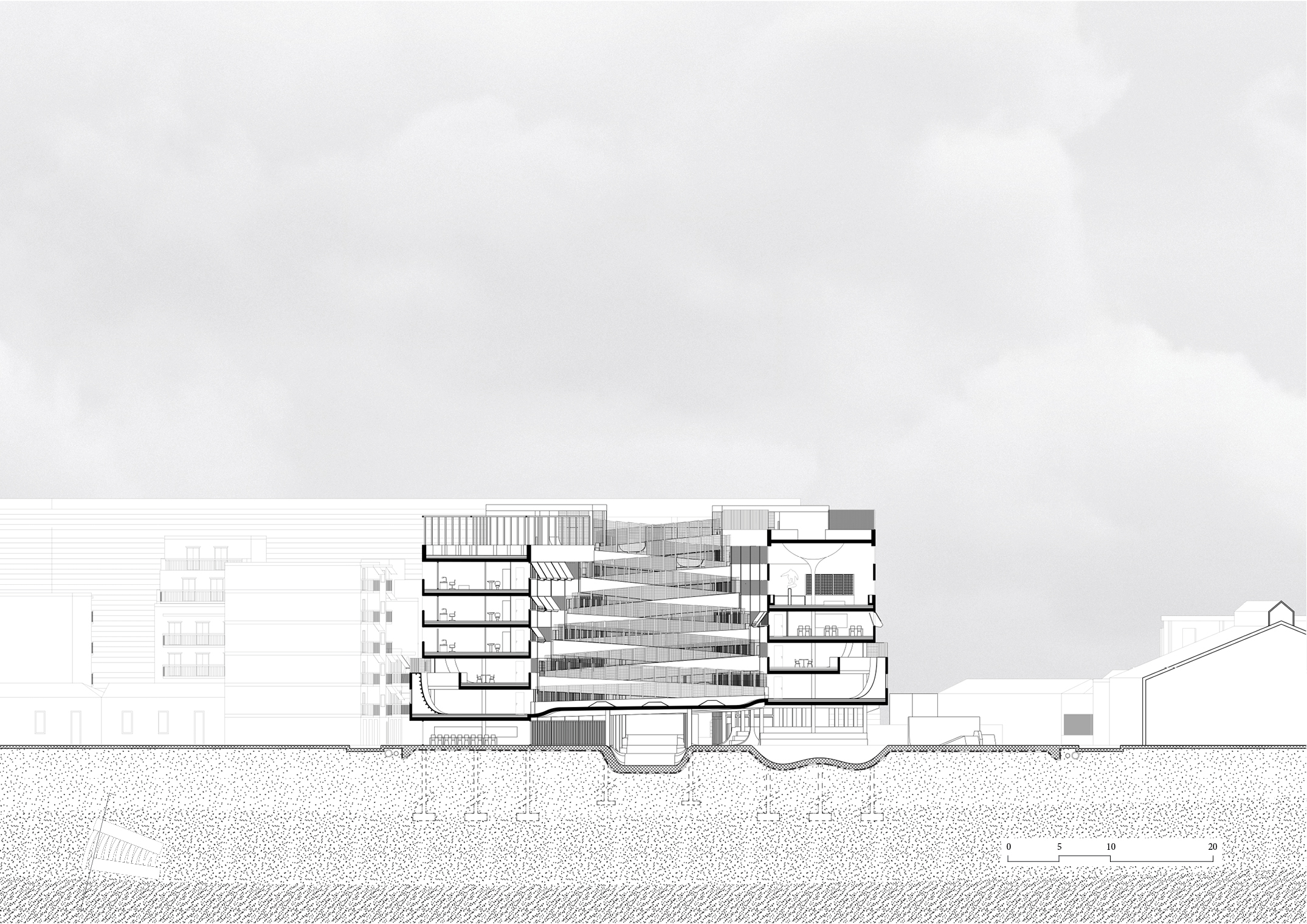

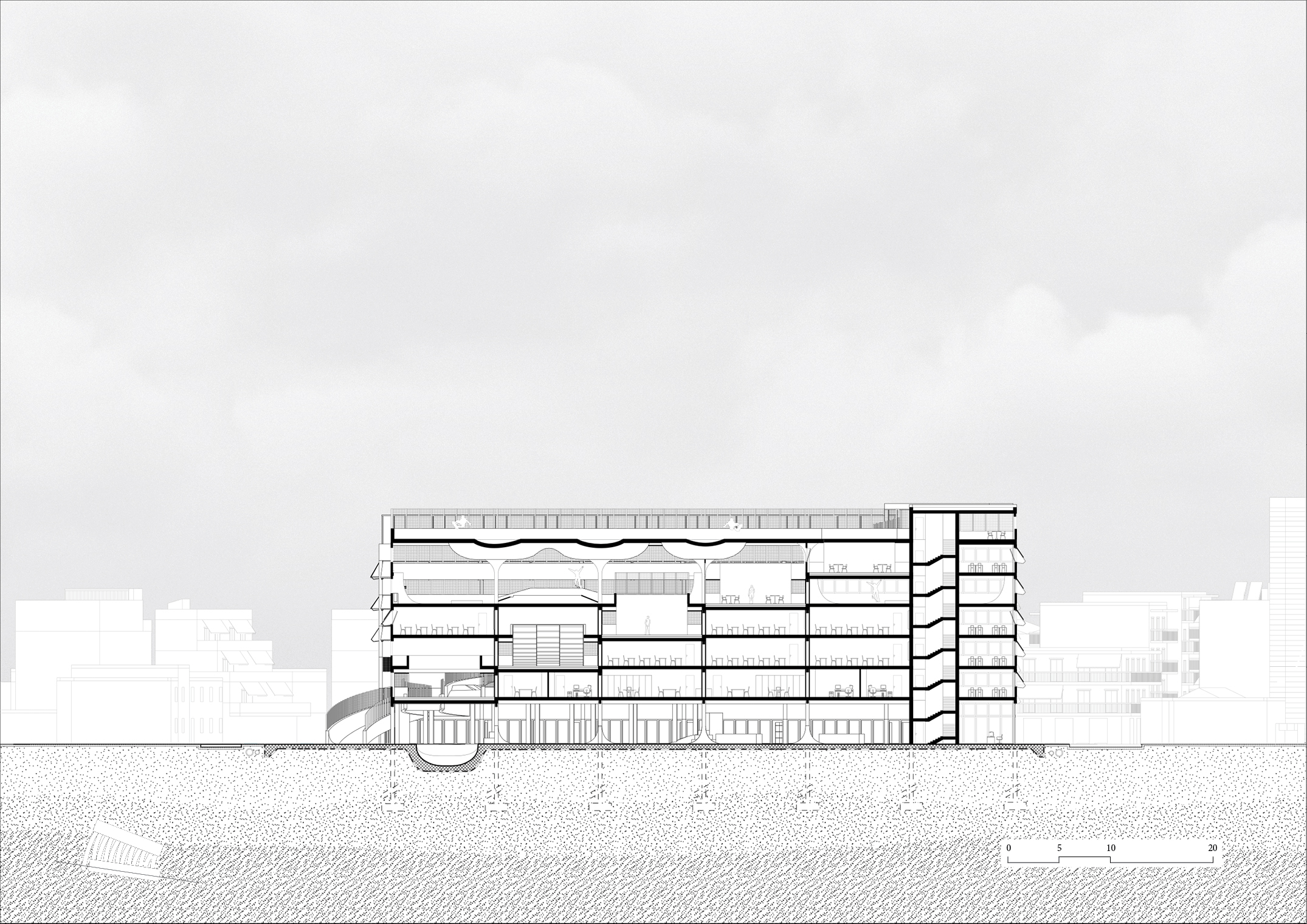
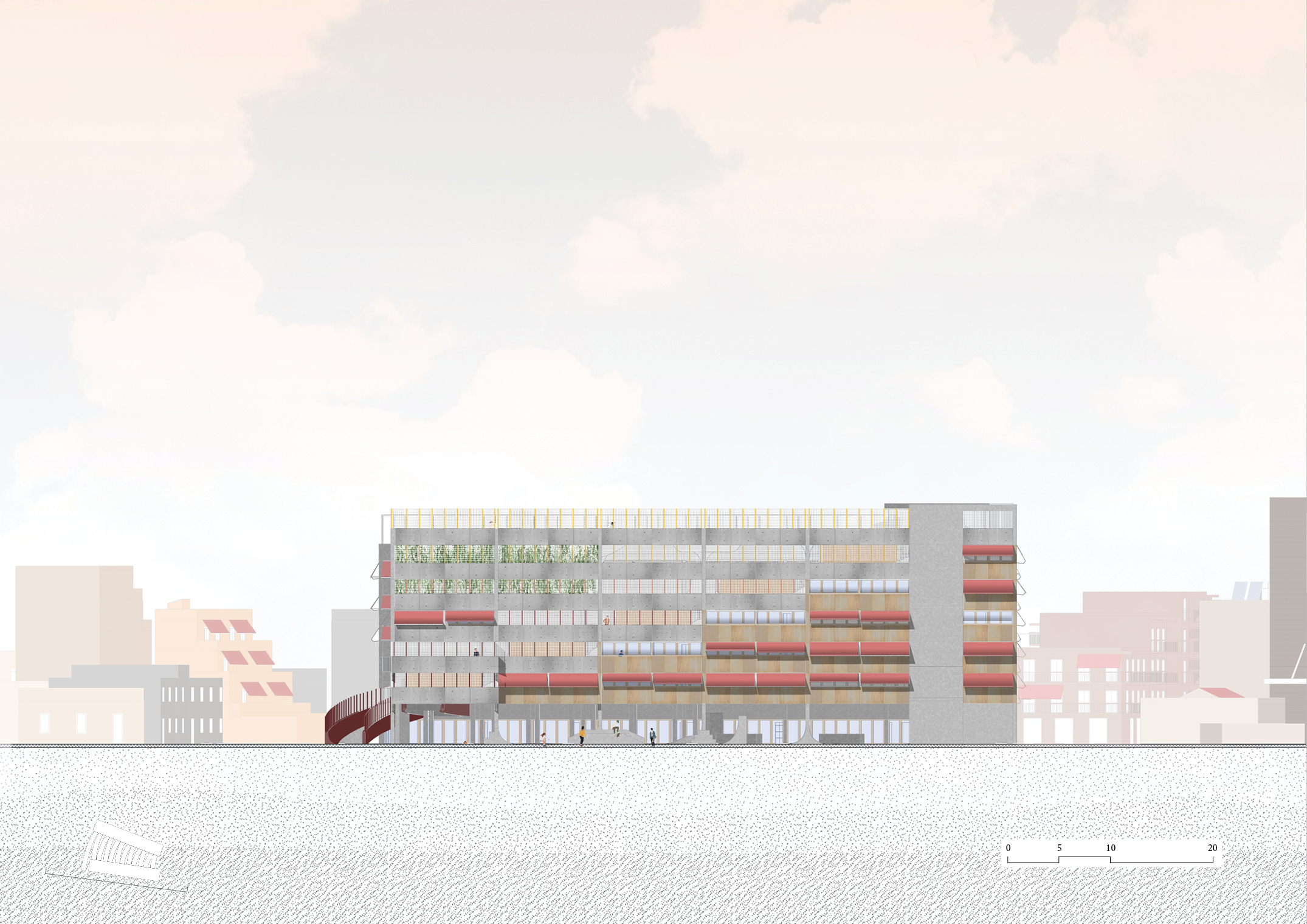
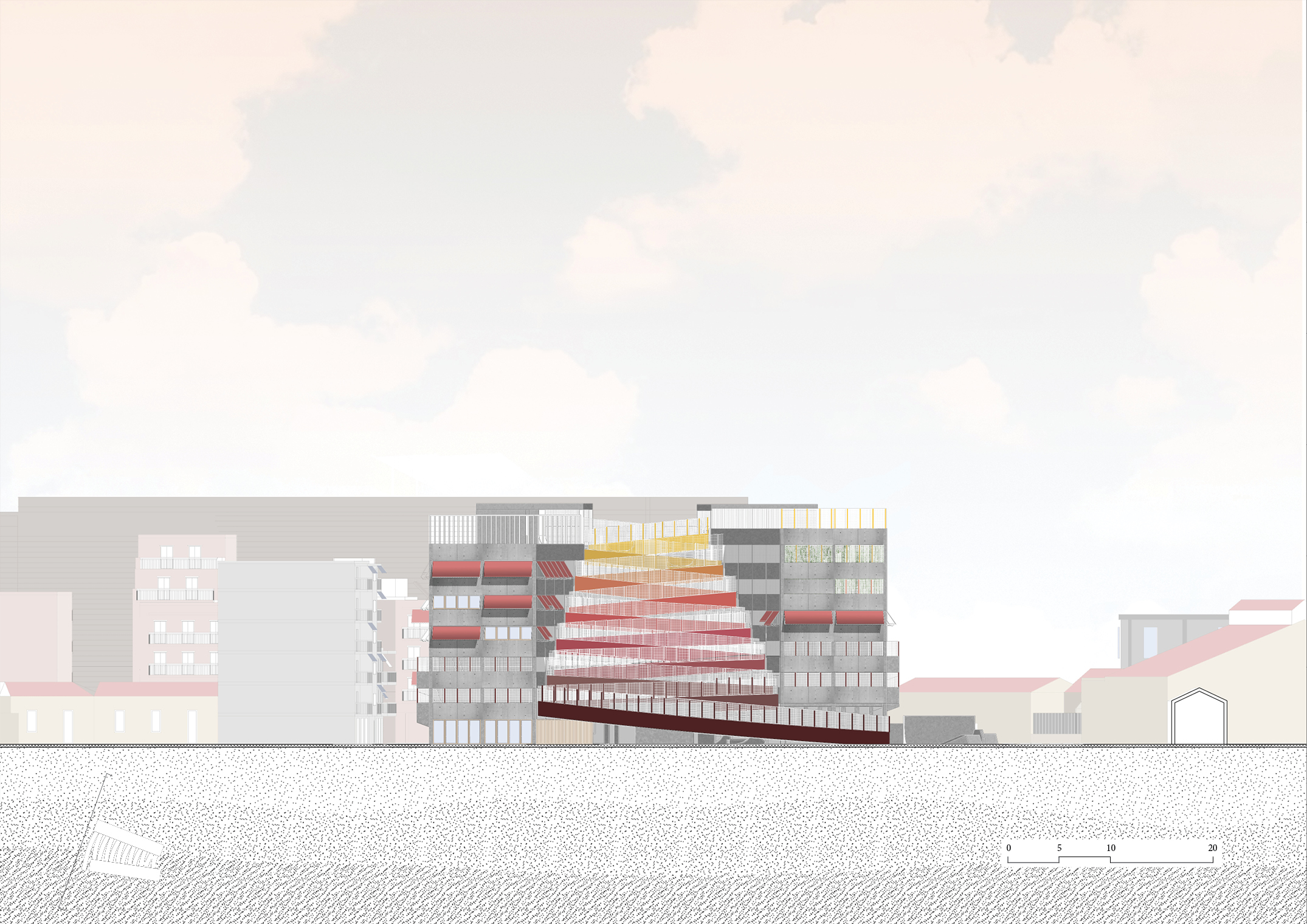
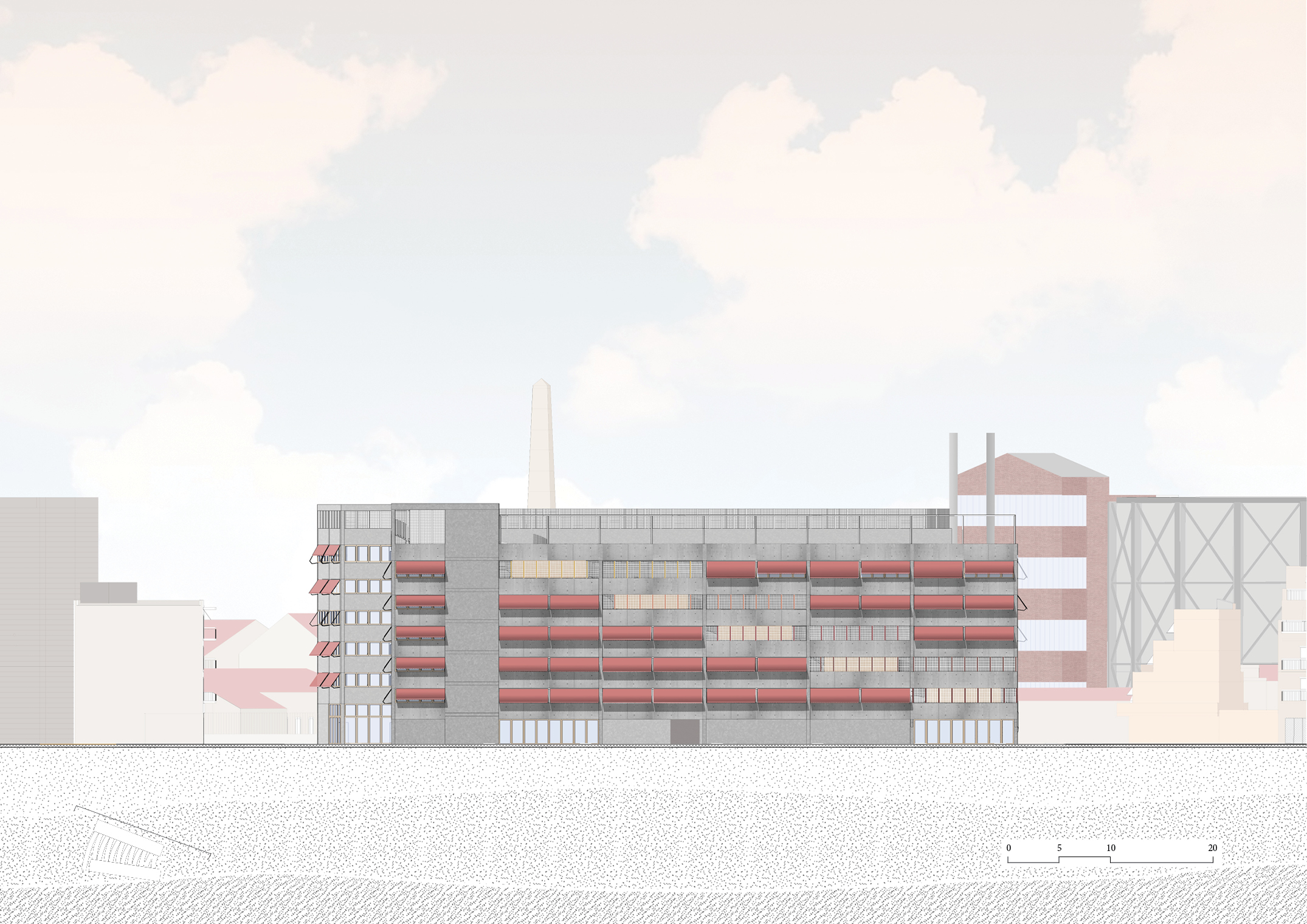

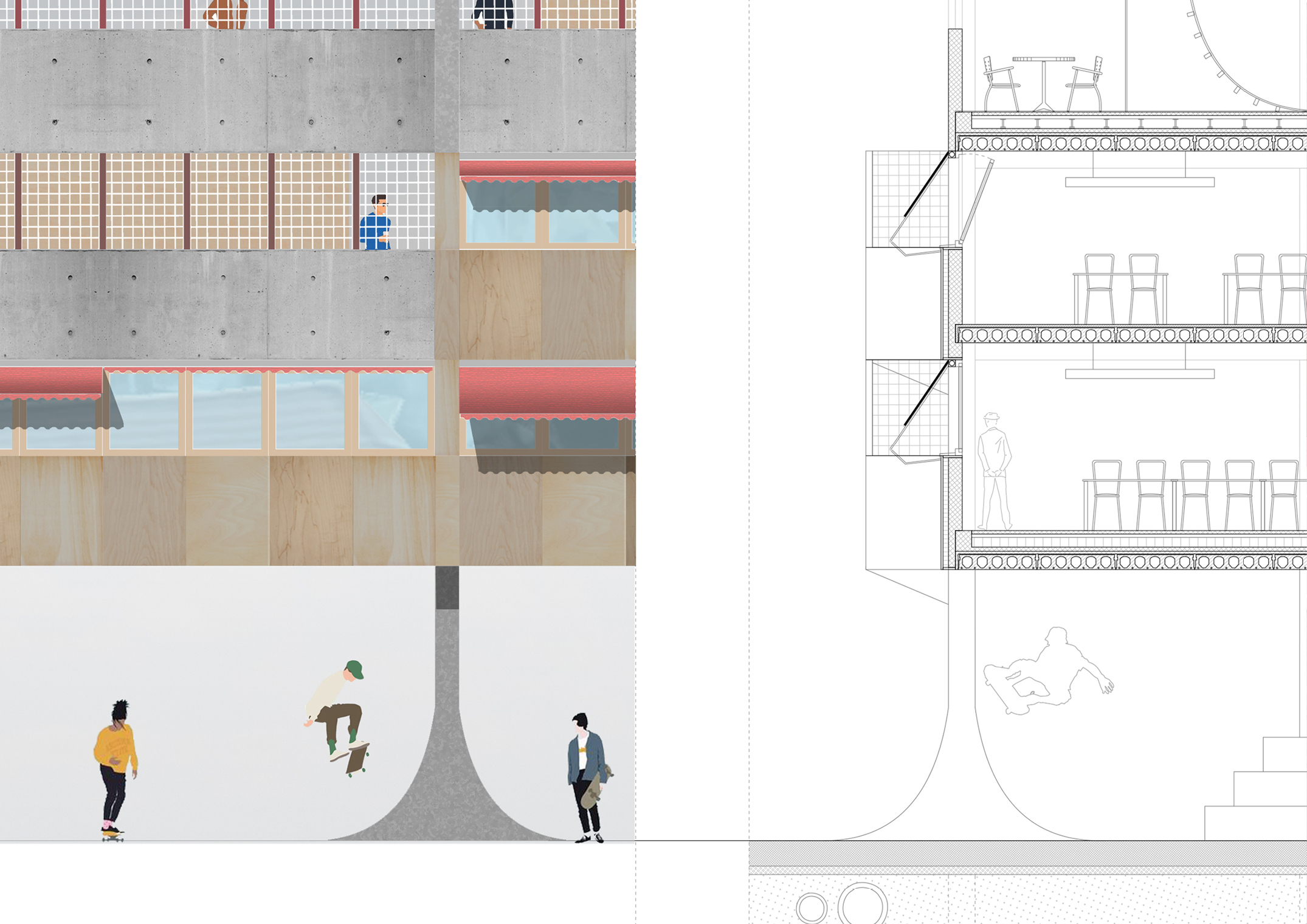
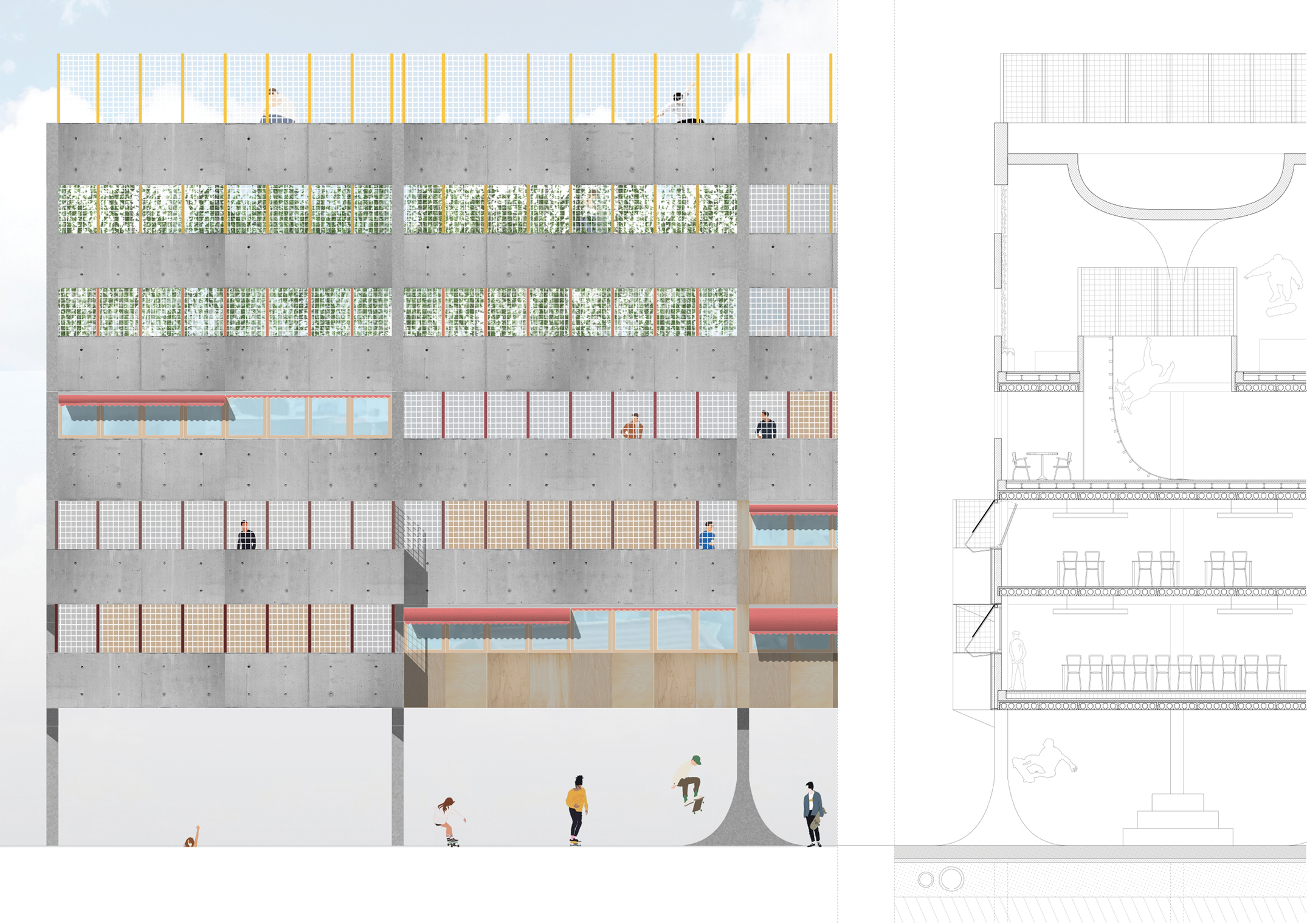
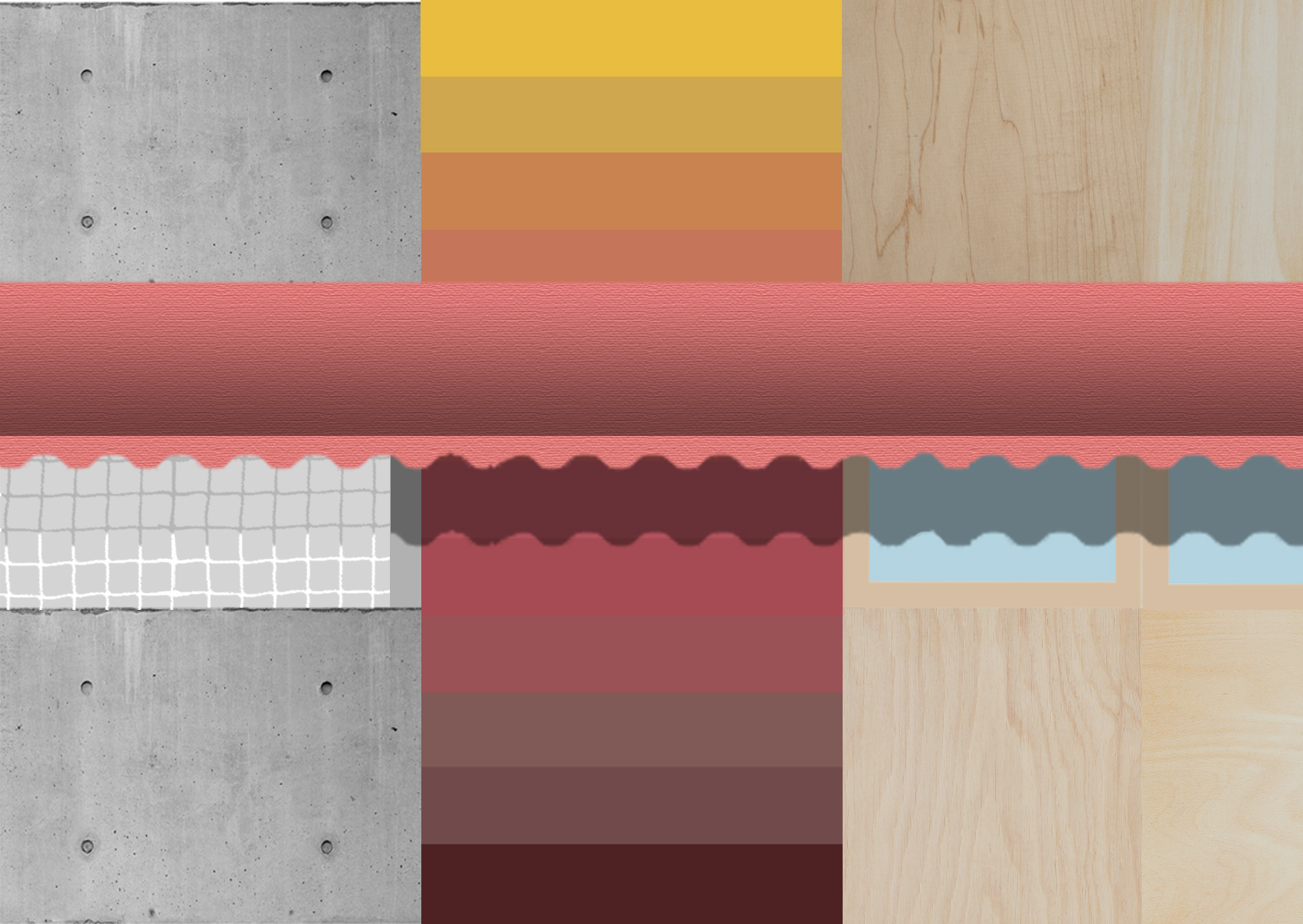
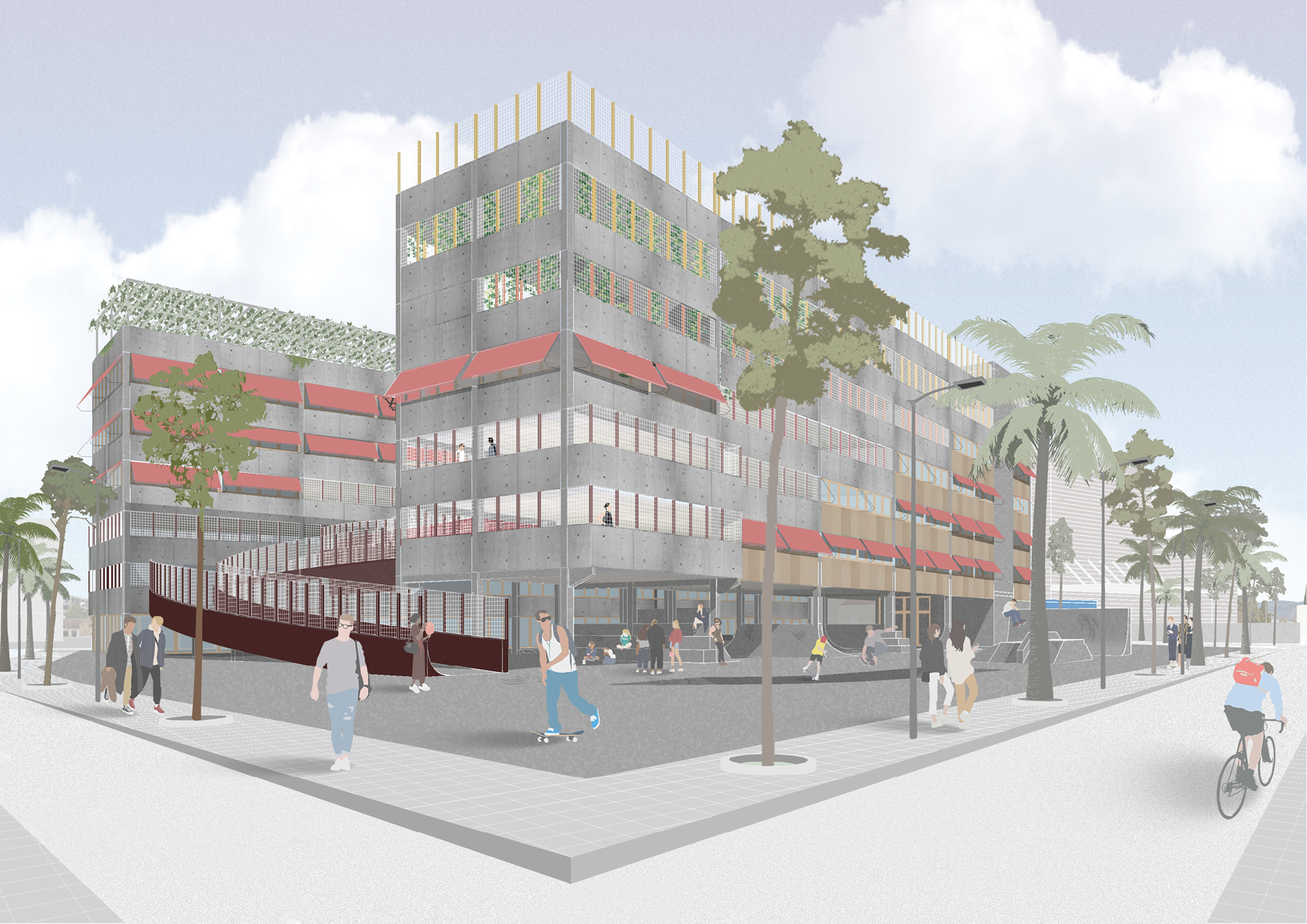
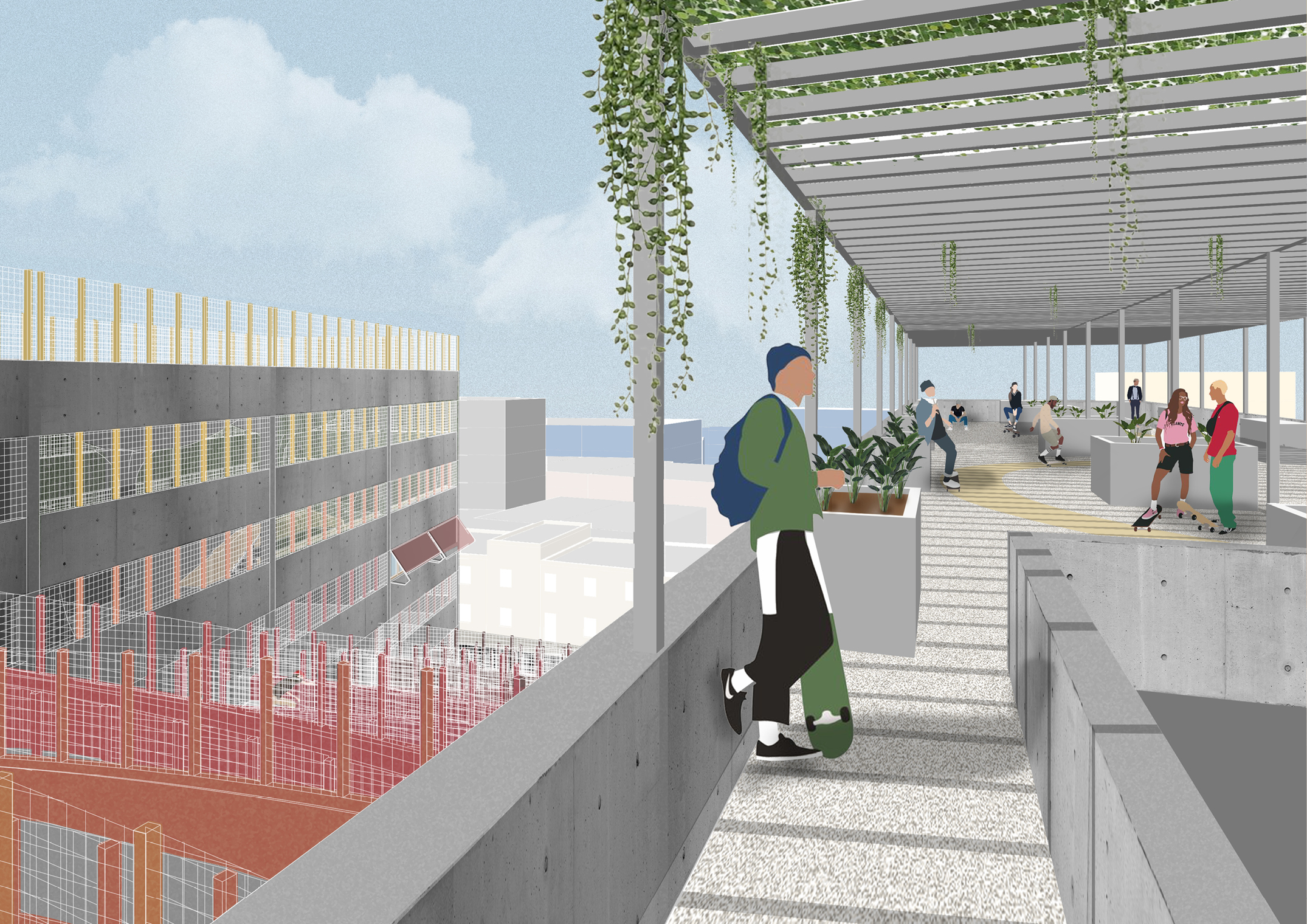
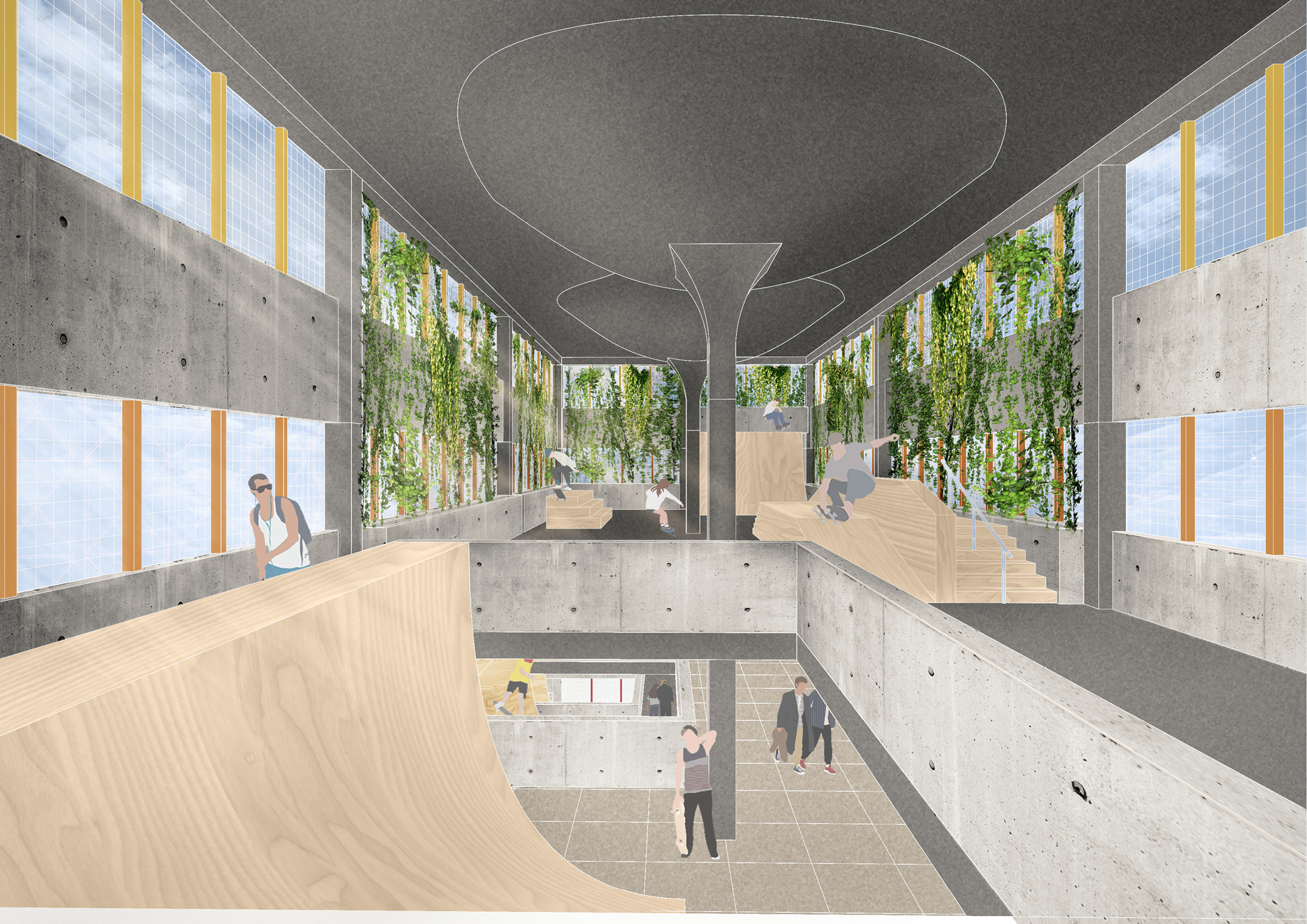
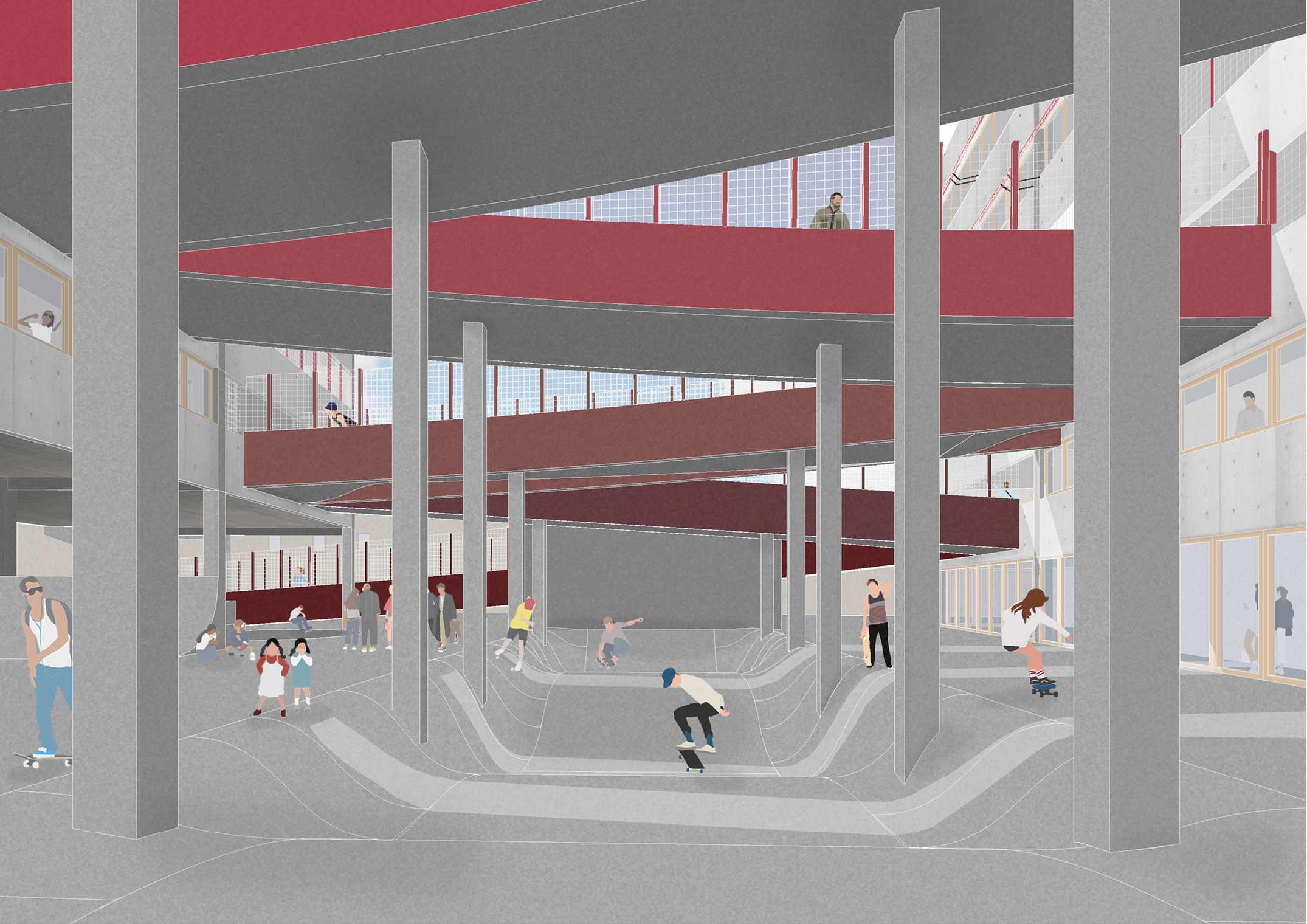
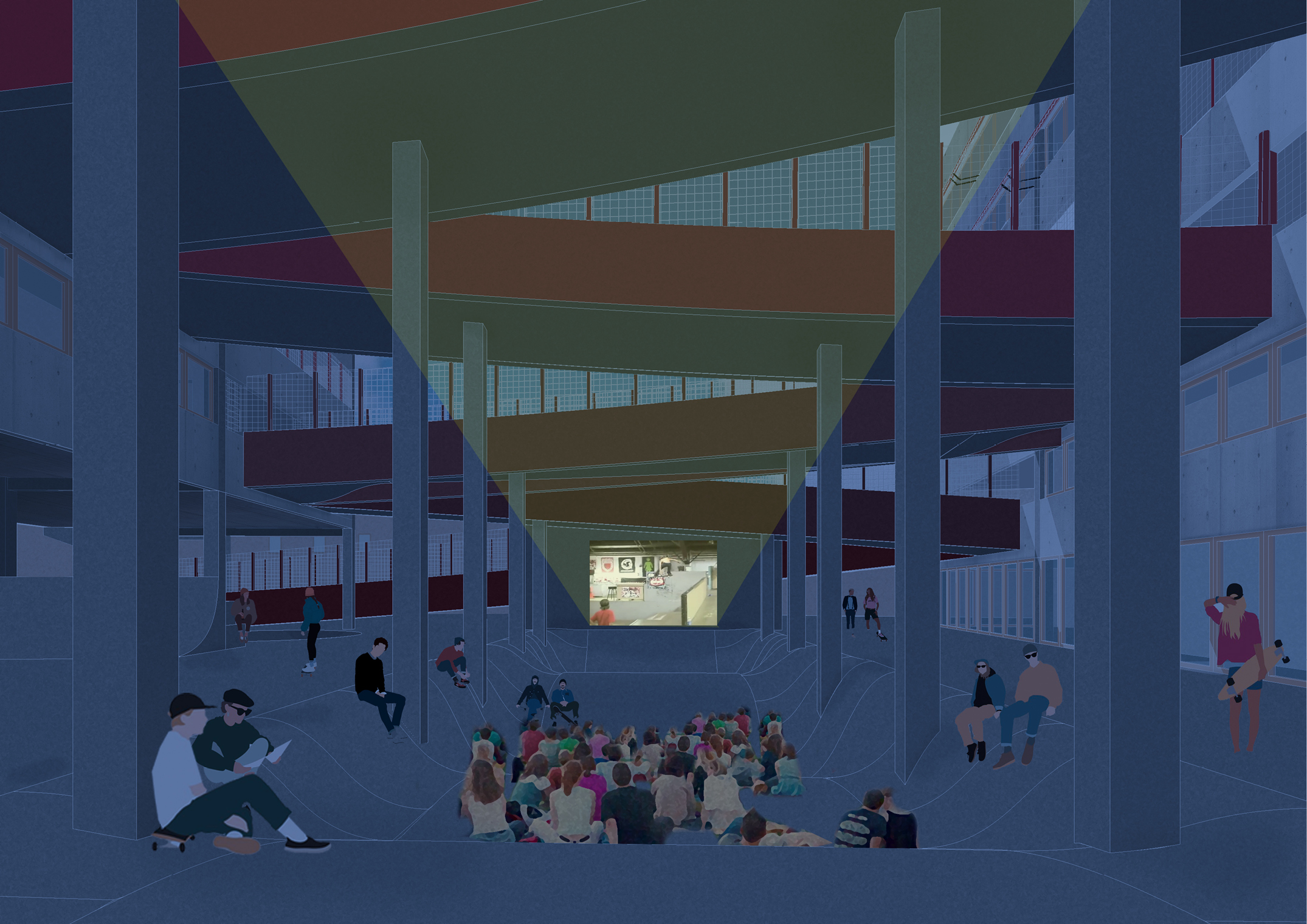








































Skateboarding is a discipline that is widely developing in the streets of Athens. Many spots are increasingly practiced in the Greek capital to such an extent that professionals from all over the world go there to shoot videos.
In spite of this fame the locals tend to complain a lot about the lack of skate parks, the closest one being at least 6 kilometers from the city center. To overcome this lack, associations such as Free Mouvement Skateboarding in relation with Greek architect Zachos Varfis and local artist Maria Papadimitriou have placed some ramps in the west of Athens to facilitate the practice of skateboarding and allow children from all social classes to interact together through the prism of the international language of skateboarding.
In order to meet these needs, the project is located in the Gazi district, which is easily accessible and surrounded by public programs such as theaters, open-air concert halls and performance spaces, and where the noise of skateboards will not be disturbing.
With two categories of skateboarding officially included in the 2021 Olympics, Athens needs a skate park for two things. First, to provide the downtown area with dedicated skateboarding spaces. Secondly, to provide a training center to allow Greece to excel in this field. This initially anarchic culture now wants to be an official sport and therefore requires training spaces.
This project, inscribed in its nearby urban fabric, produces two built blocks which by their progressive approach generate shorter and shorter ramps with similar differences in levels at each floor. The slope is more and more steep, the level of complexity increases at each floor as well as the students’ years of study.
Composed of an identical frame, inspired by the surrounding polykatoikia, the free plan will allow in a single gesture, to accommodate all the programs necessary for this project. The Ground floor is a large expanse of smooth concrete composed of inflections and extrusions that will allow the students to train in the two categories present at the Olympics, the bowl and the street park. this ground floor mutate in the ramps witch by touching the buildings, change their program on one tram to become praticable, this go on to the roof until changing the vertical structure becoming symbol of the création of the skateboarding, the bowls.
The ramp will become the symbol of the evolution of a student who will spend 6 years practicing it and who, once all these teachings acquired, will come to use this suspended floor as a roof of amphitheater, place of consecration, in order to assert their insertion in the professional environment of the skate.
According to John Cage, “an experimental action” is one “the outcome of which is not foreseen.” Titling this course Architecture & Experience celebrates on the one hand its attachment to the question of high architecture as a discipline forged in historical and theoretical projects and, on the other, the experimental nature of an explorative approach that has been an operative concept of said discipline ever since the Renaissance – explorative, but still grounded in concrete reality.
Theory, by identifying the working principles defining architectonic forms along time, makes possible every kind of parallel while transforming every sort of question into potential architectural problematics. This is our main field of exploration.
Theory allows us to write the narrative that defines the rules of the project on the one hand and give it a mean on the other hand. Reason helps us to imagine narratives that, considering the rules of nature and reality, allow us to justify from a rational point of view disposals that would be irrational in a different conceptual context. Thus we can succeed in building dreams from the ordinary condition.
Athens is a condensator of the most glorious Antique European architecture and of the almost non planned urban forms of today that makes of it a laboratory for exploring the contemporary status of architecture and city. As usual, students have not traveled to Athens, to work more from the imaginary of the city than from its reality.